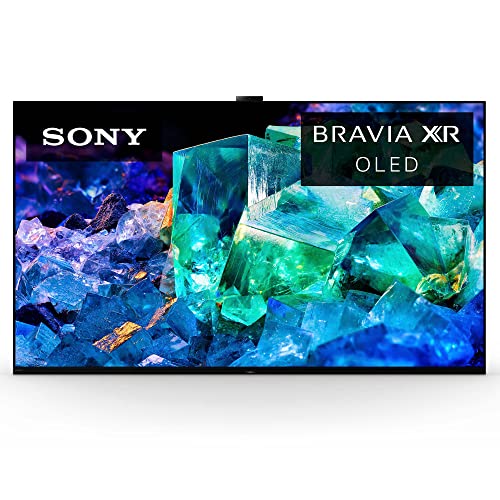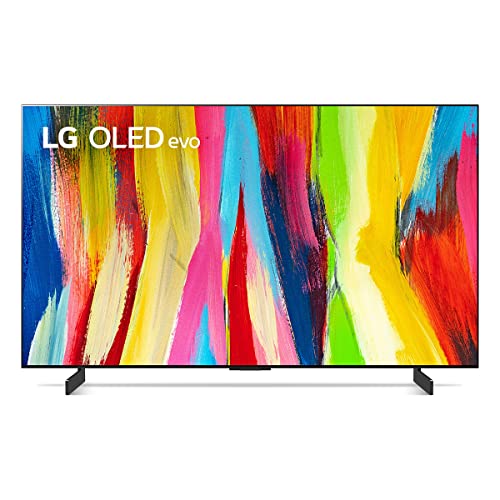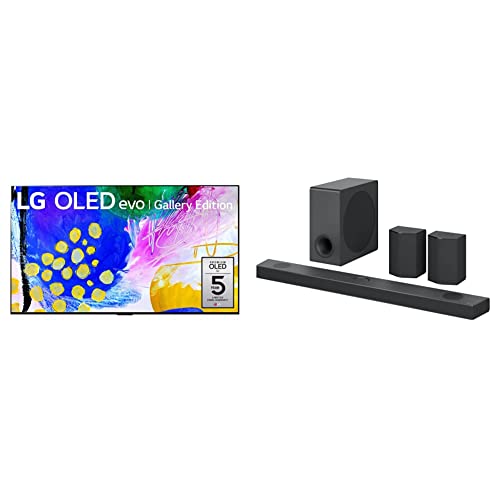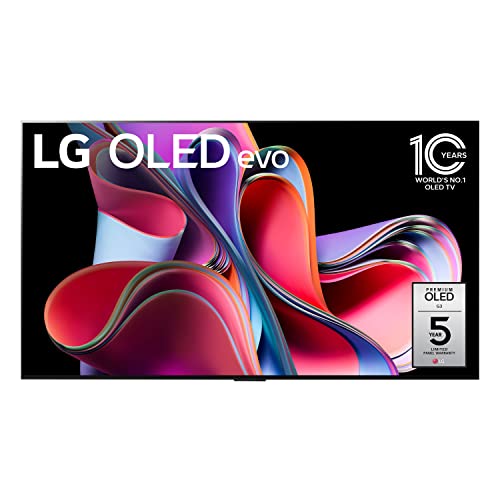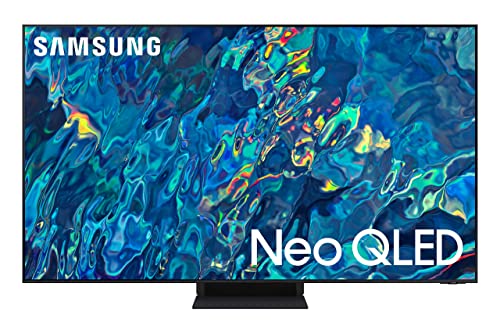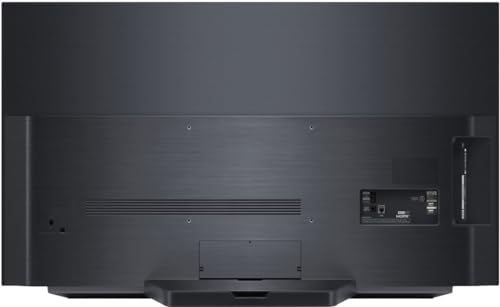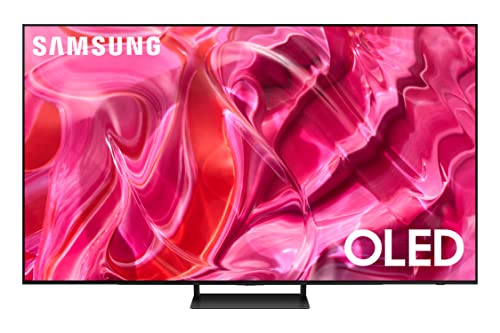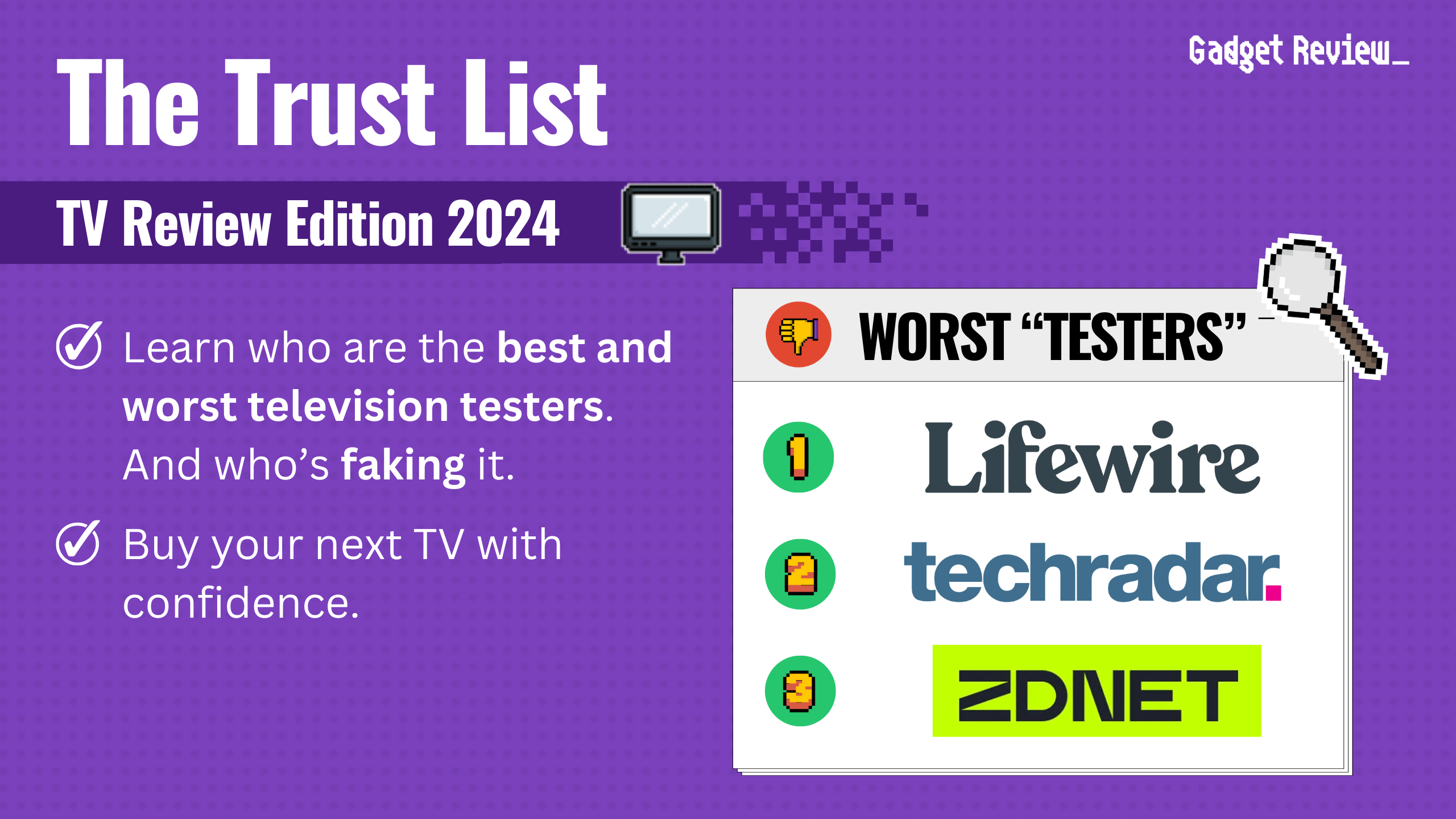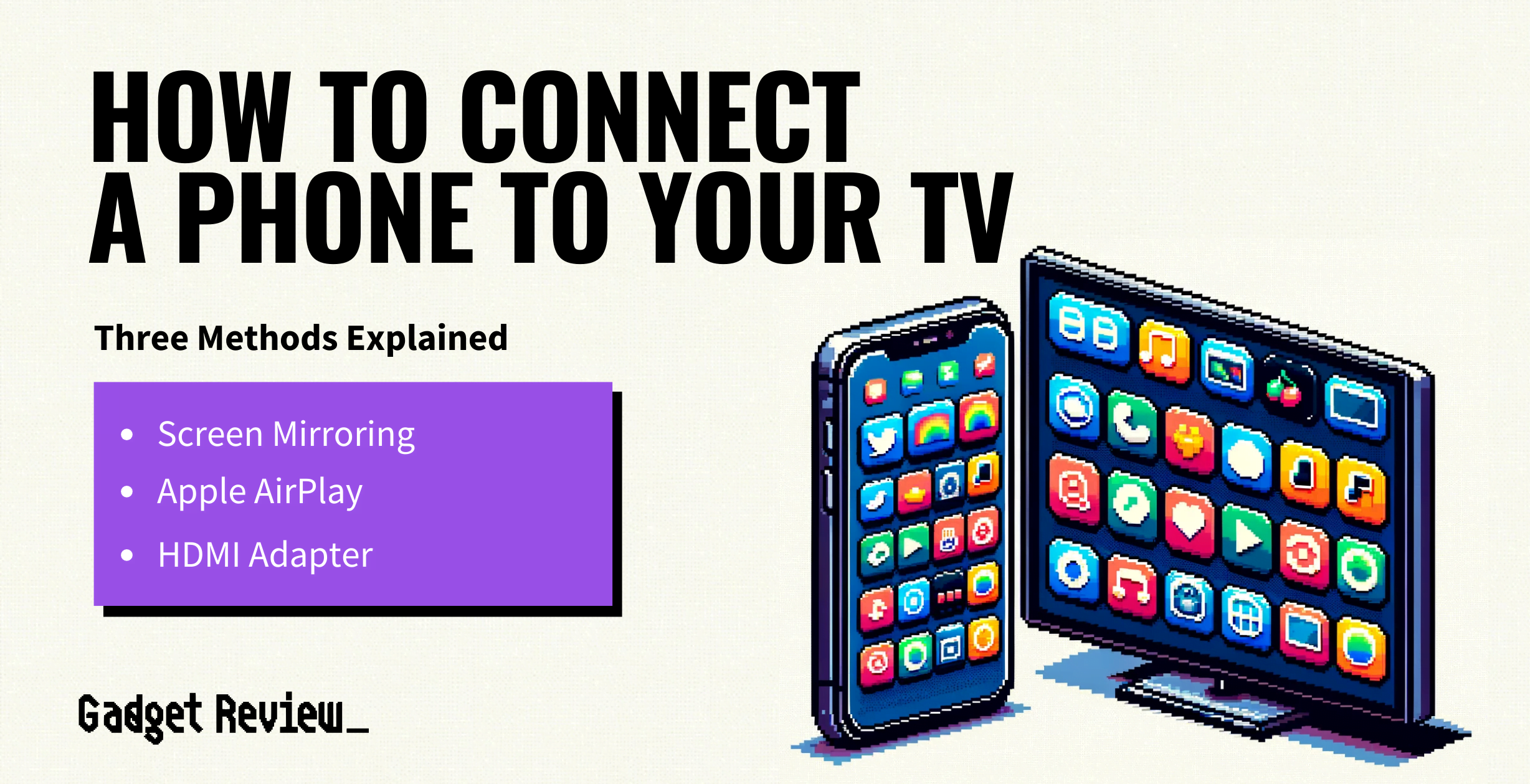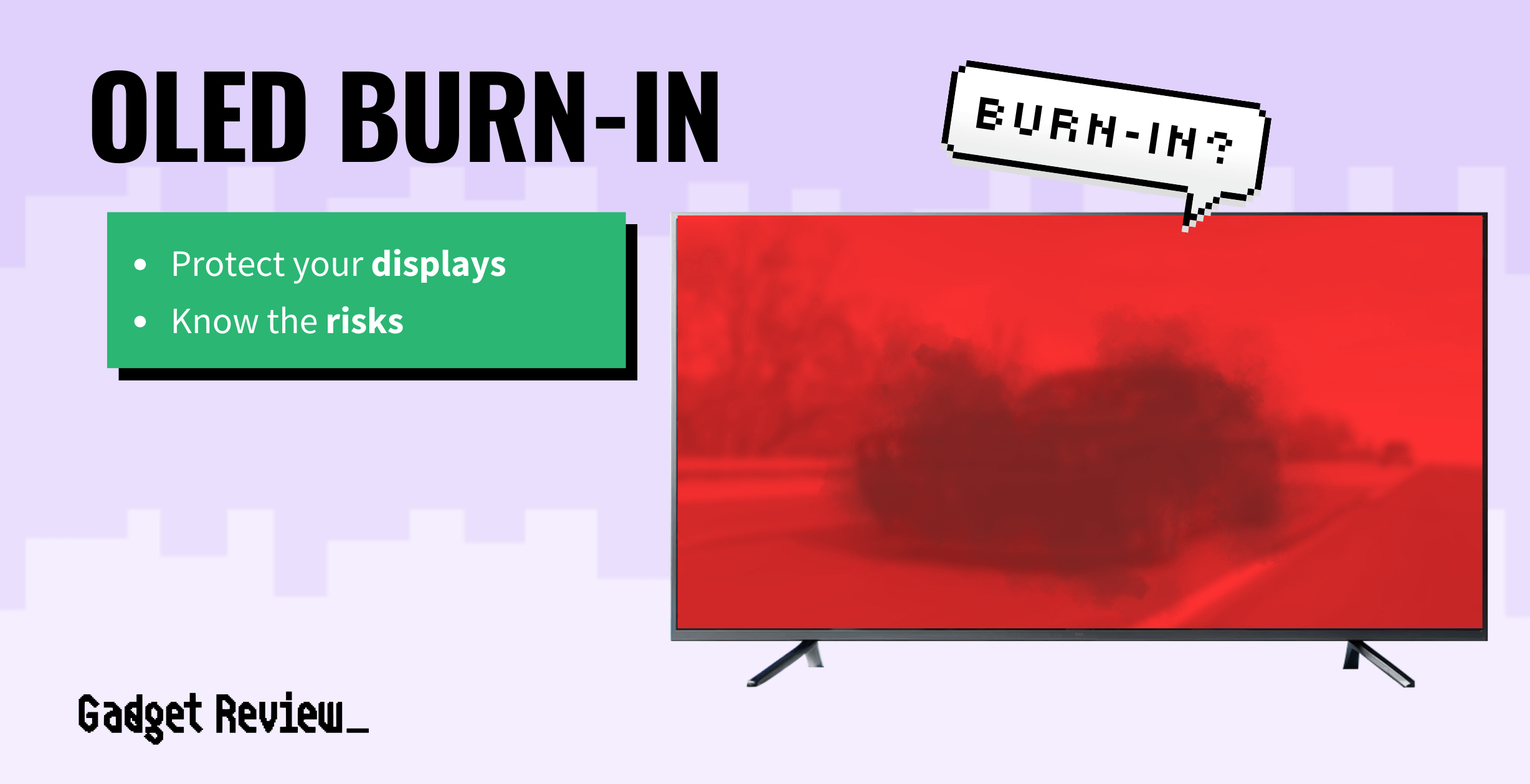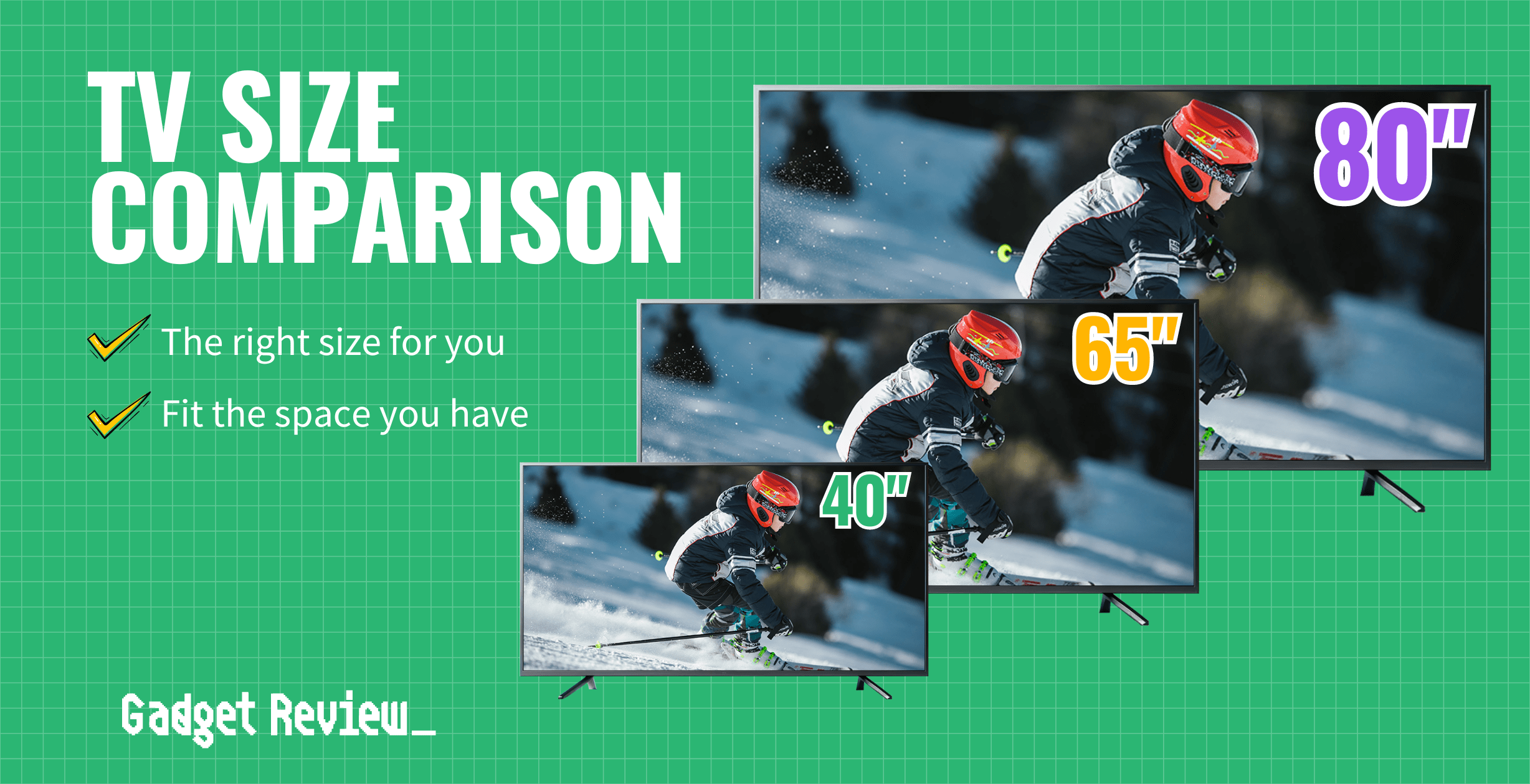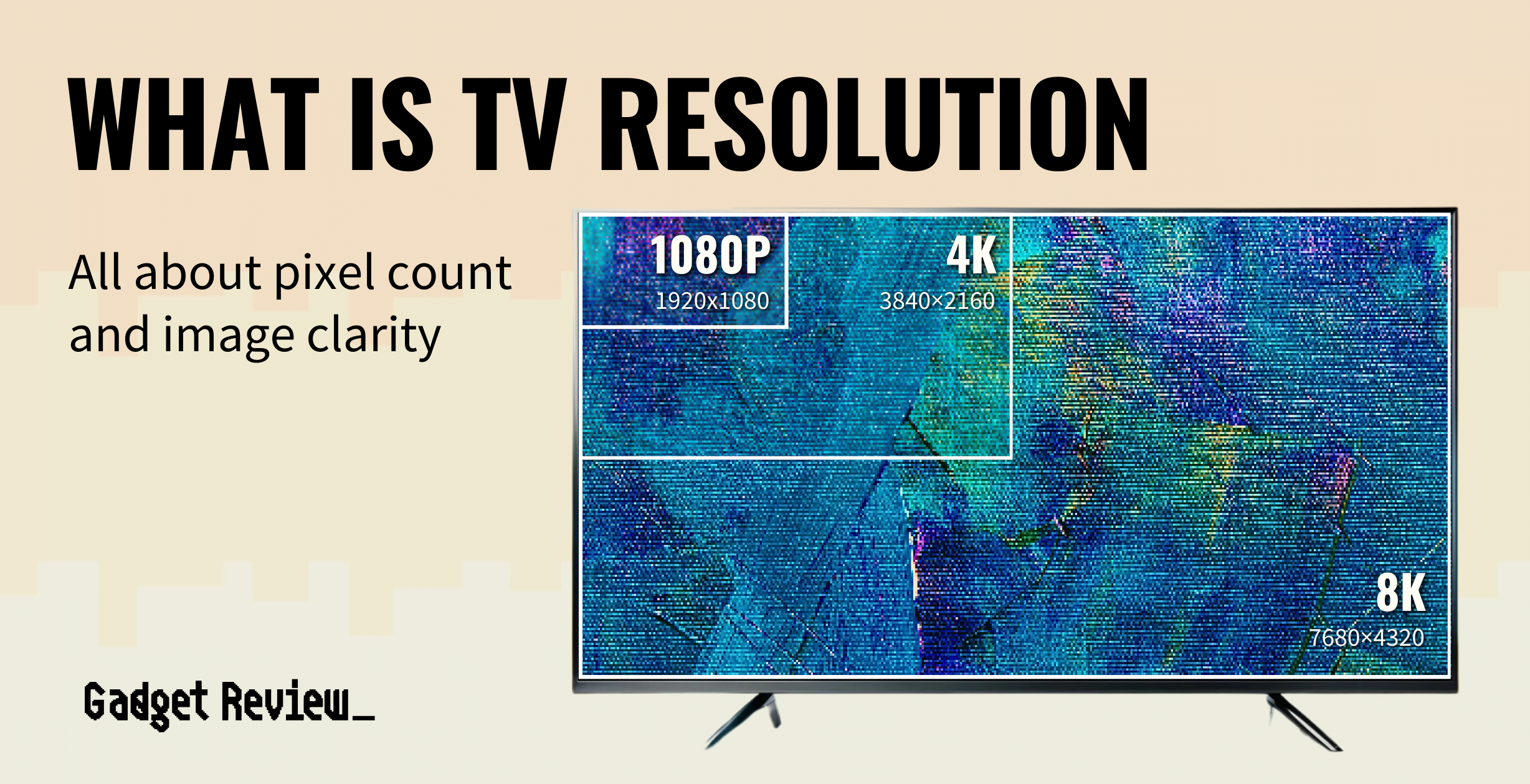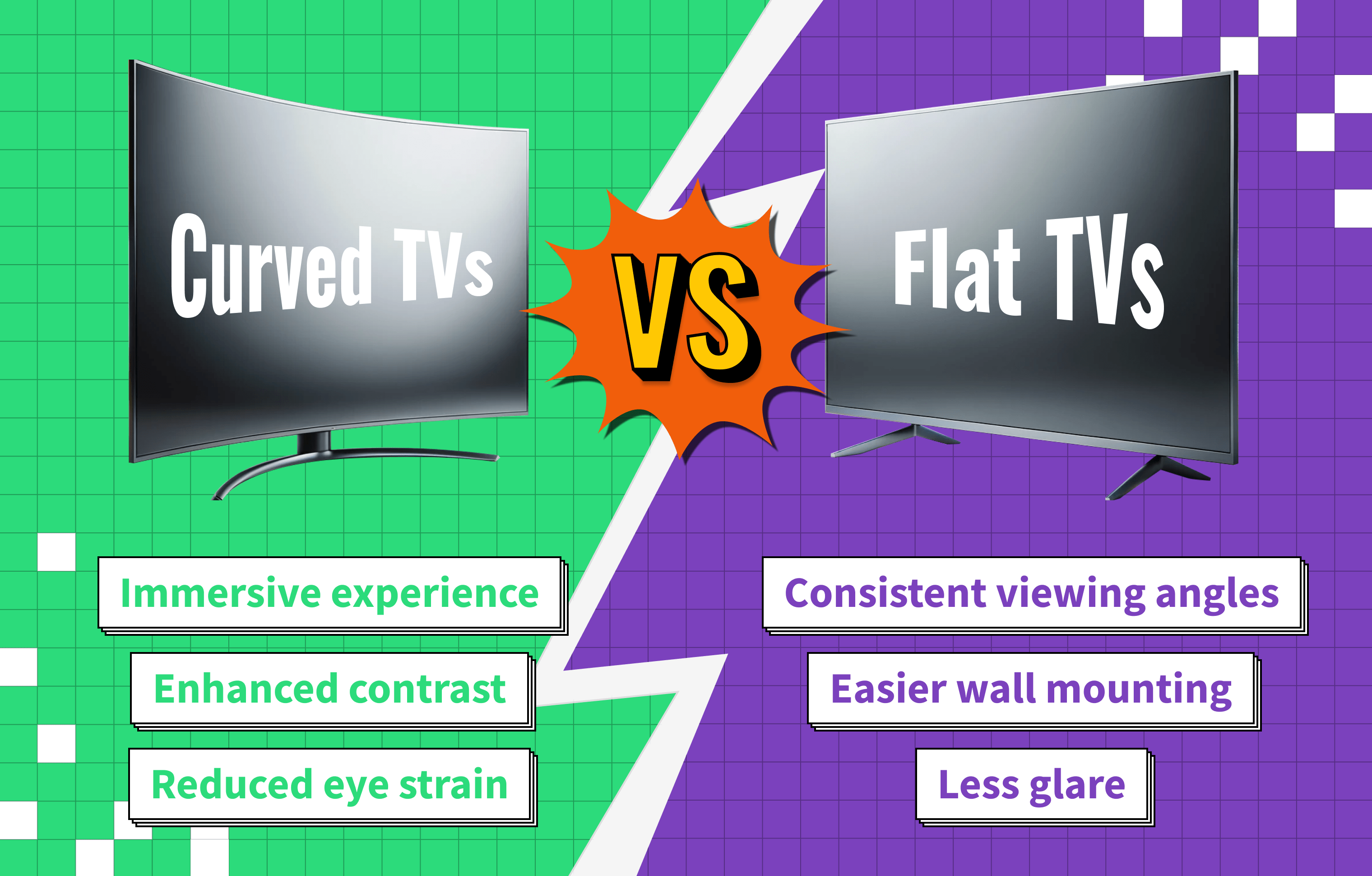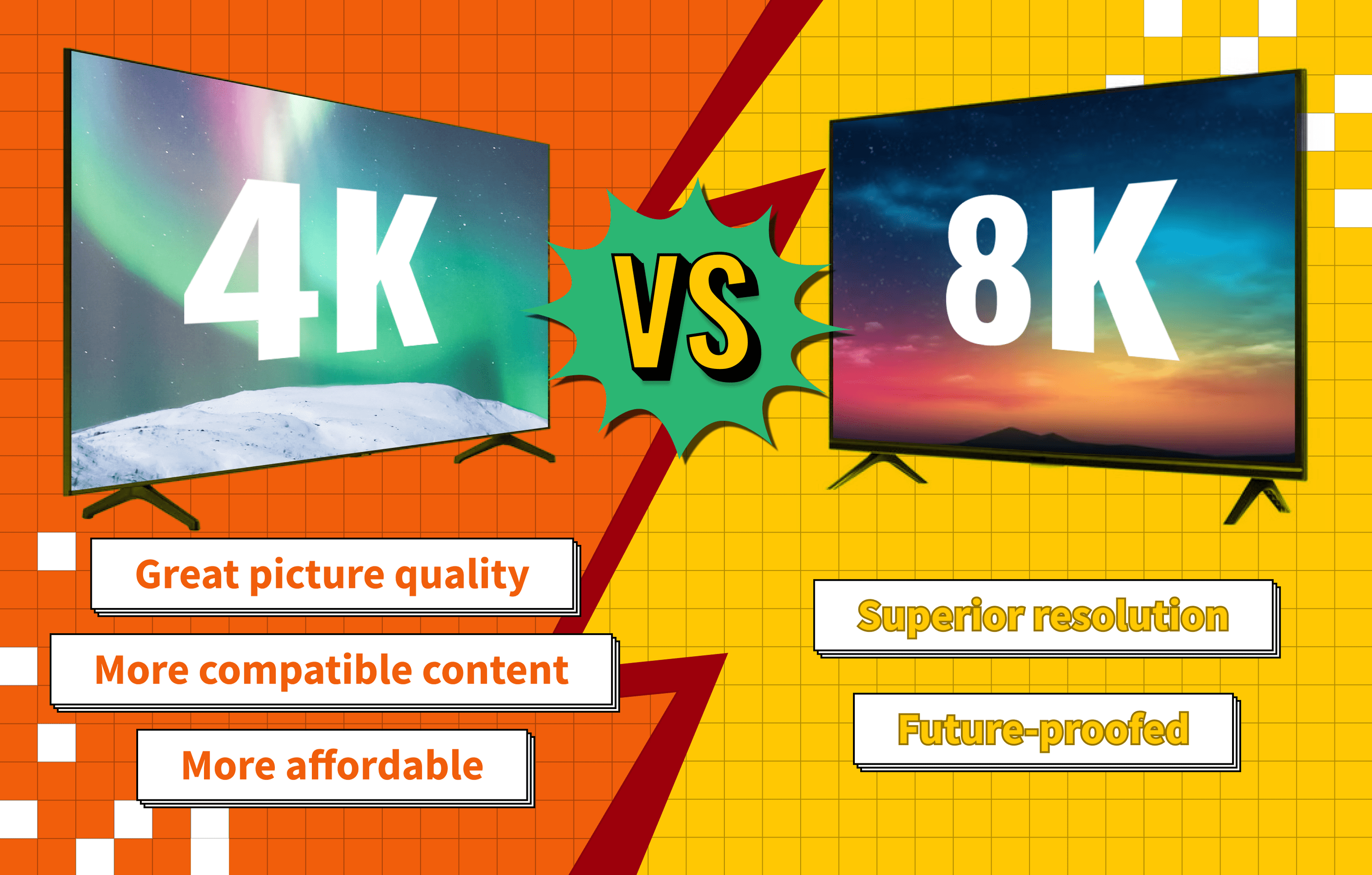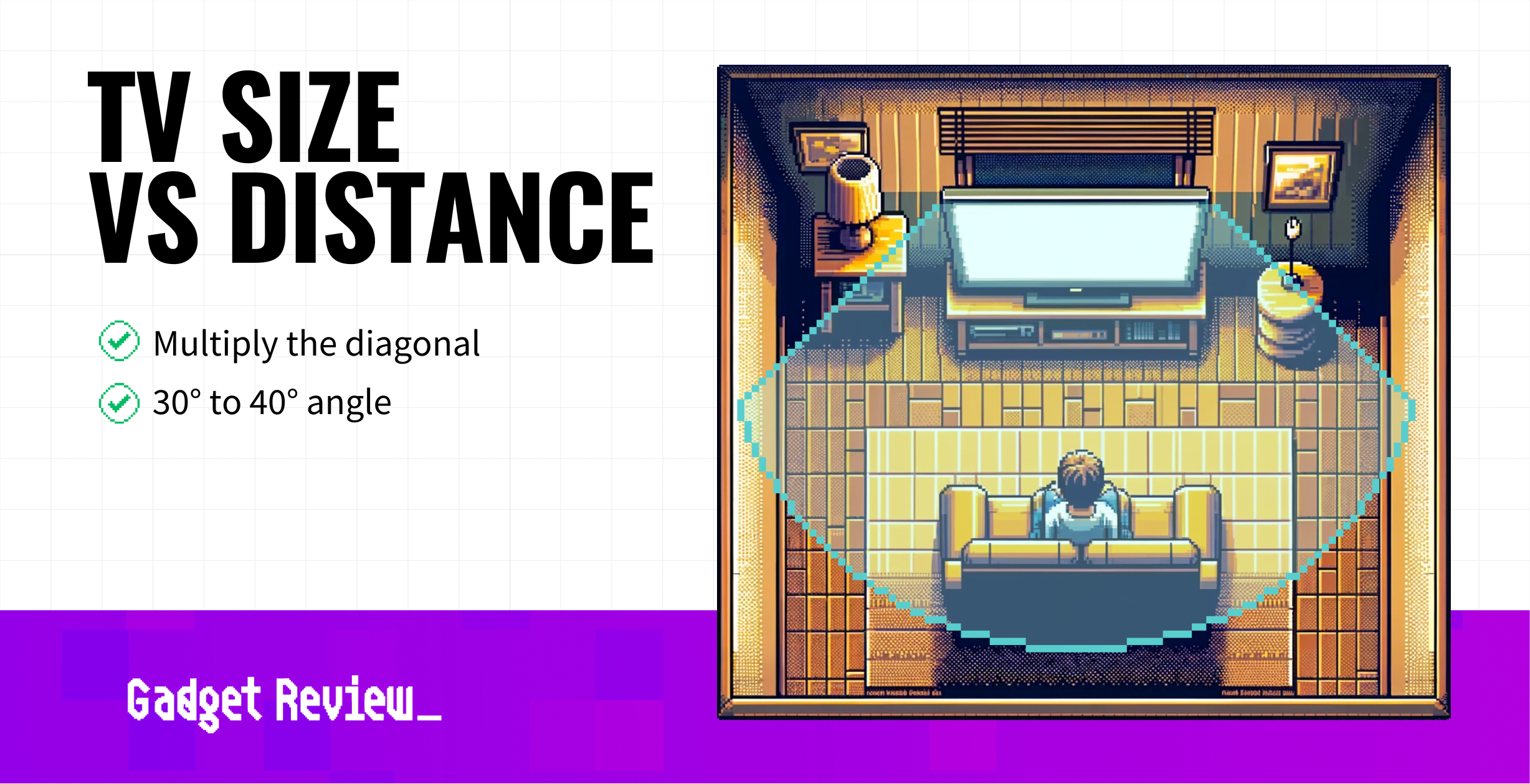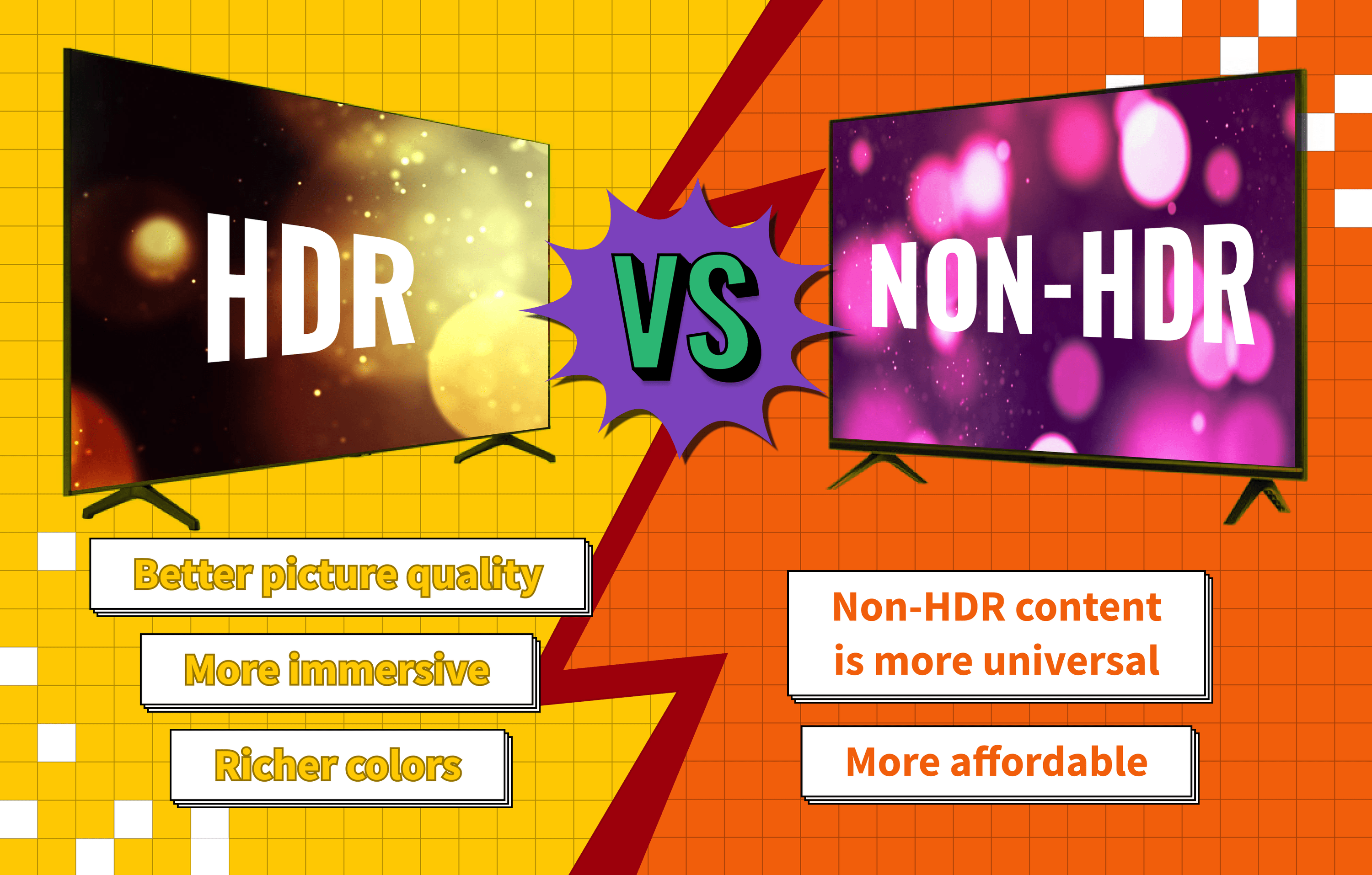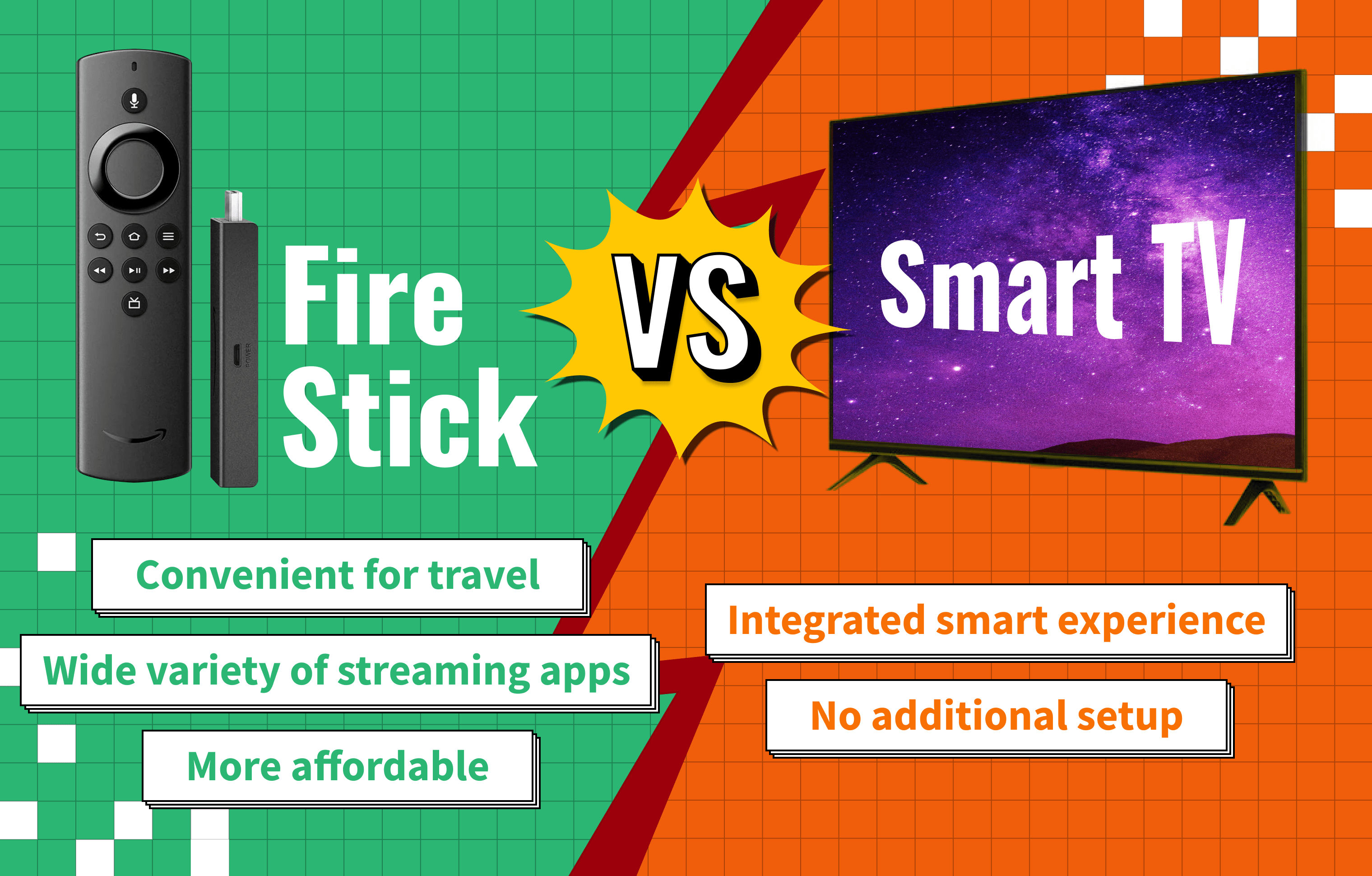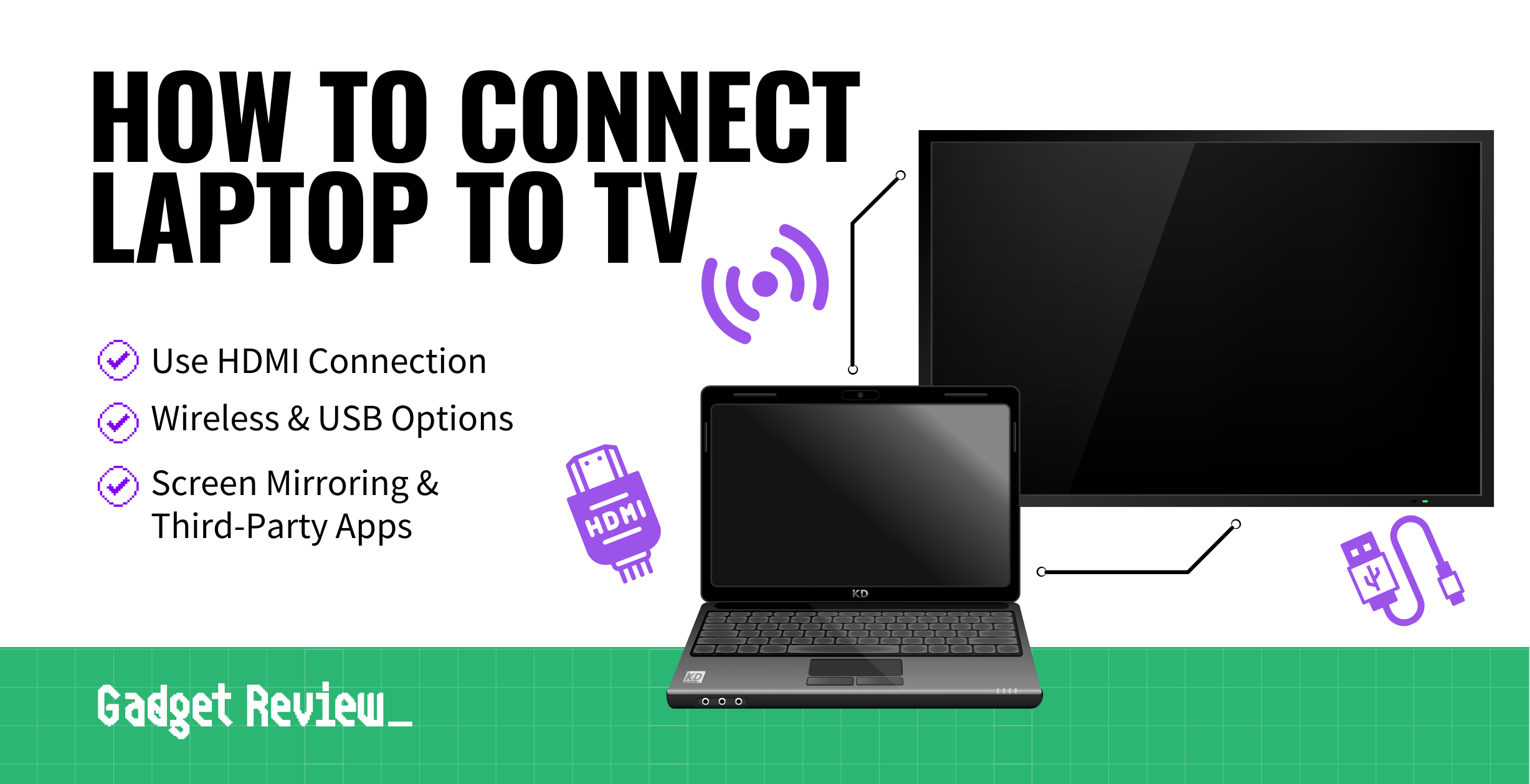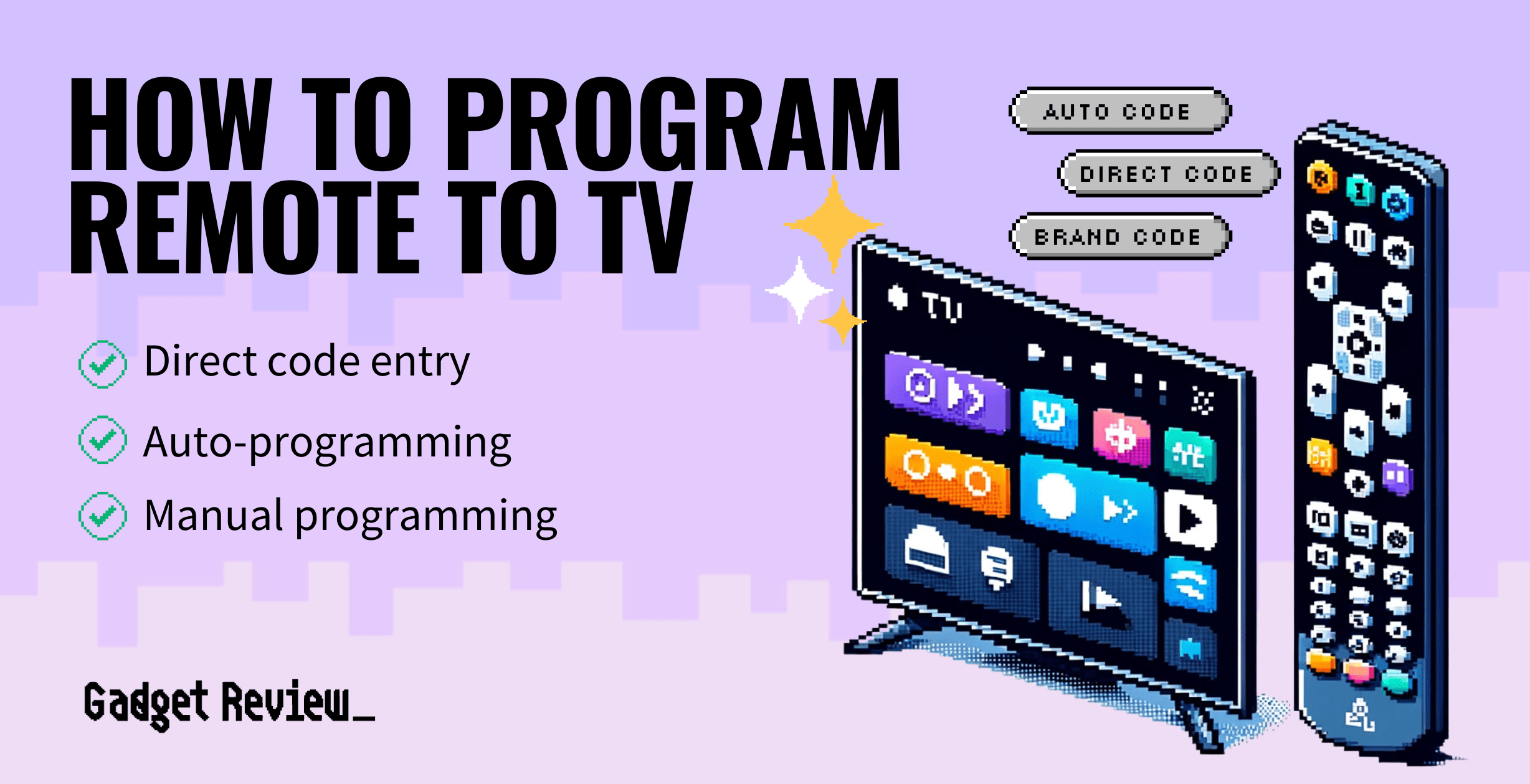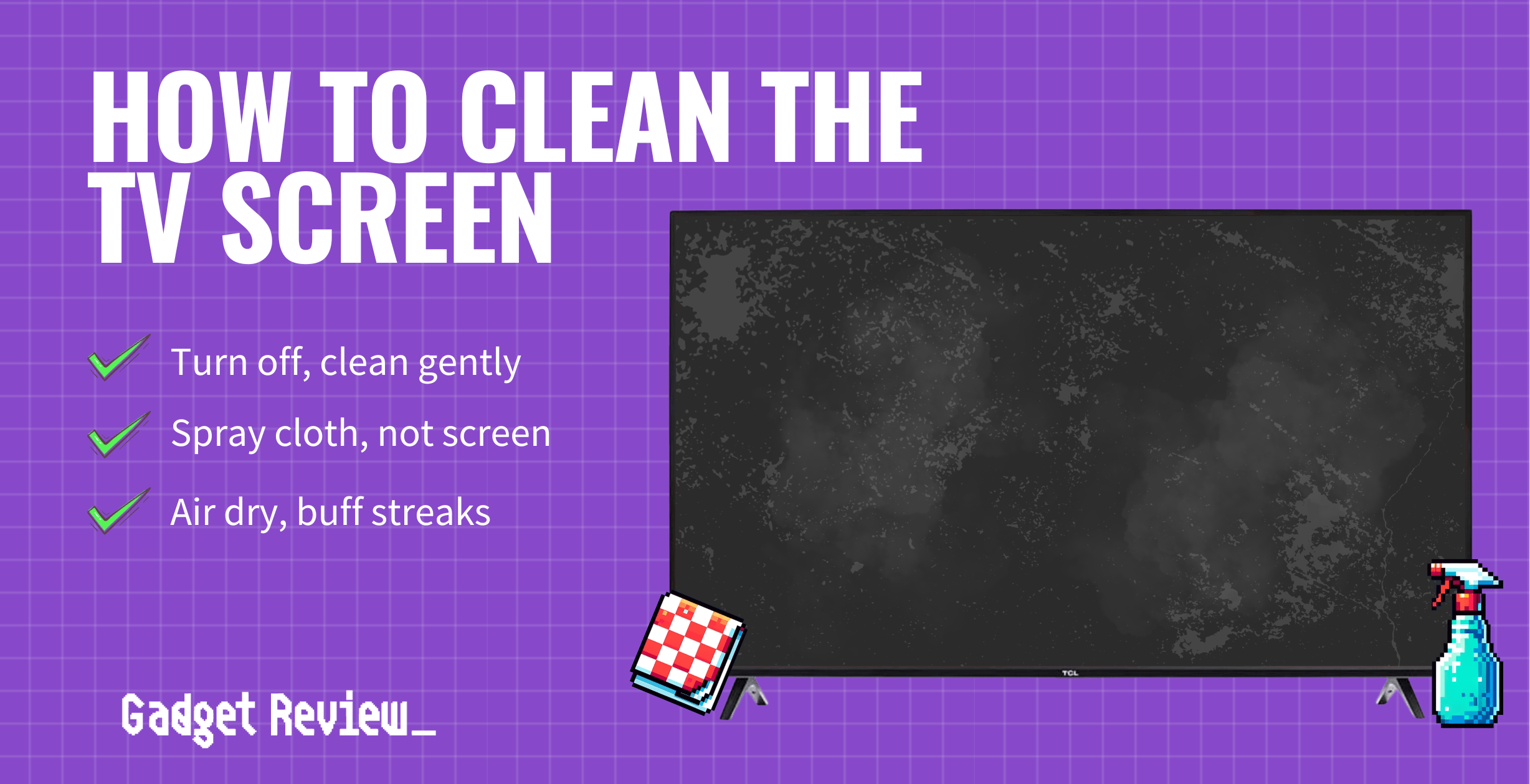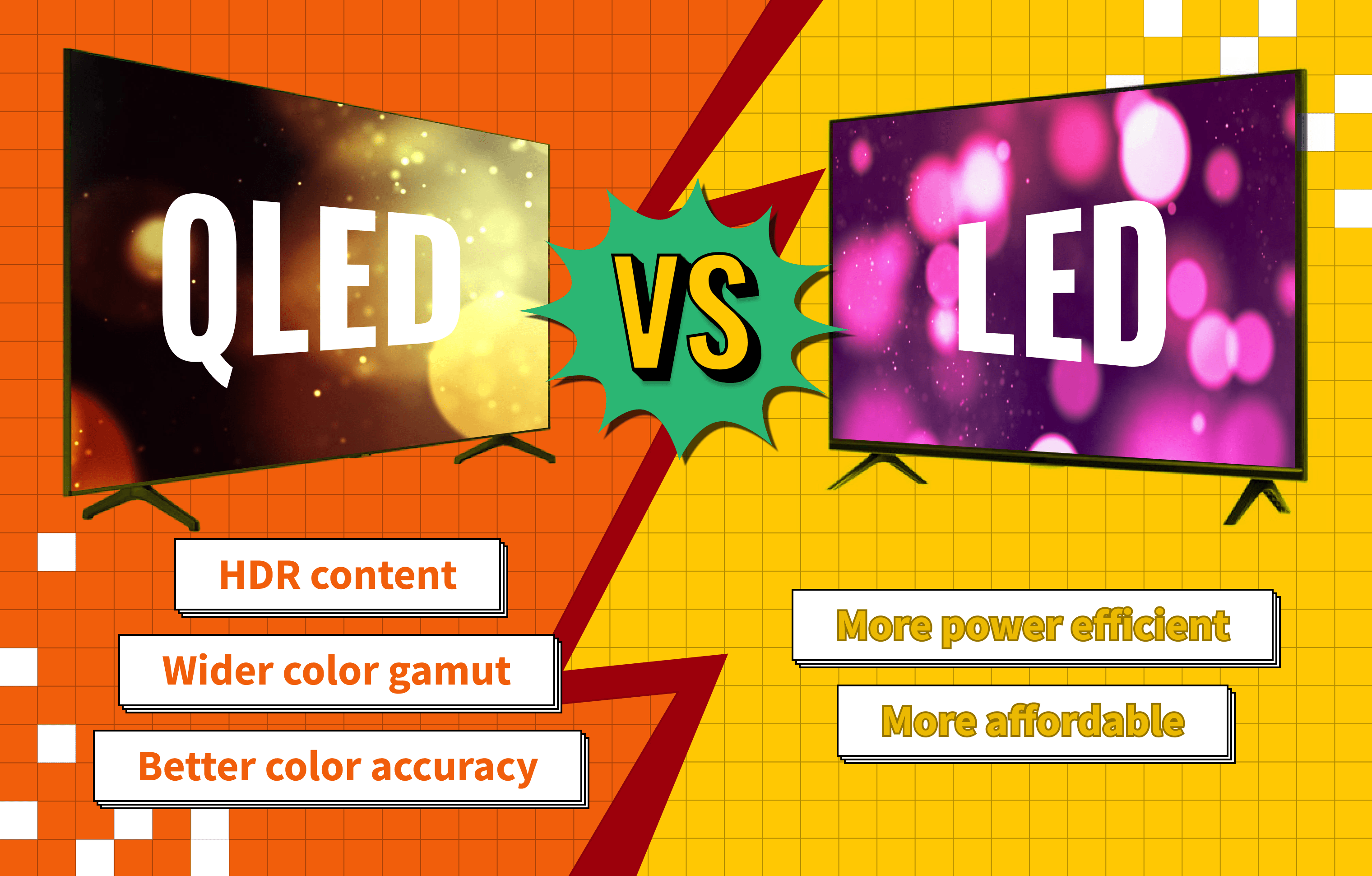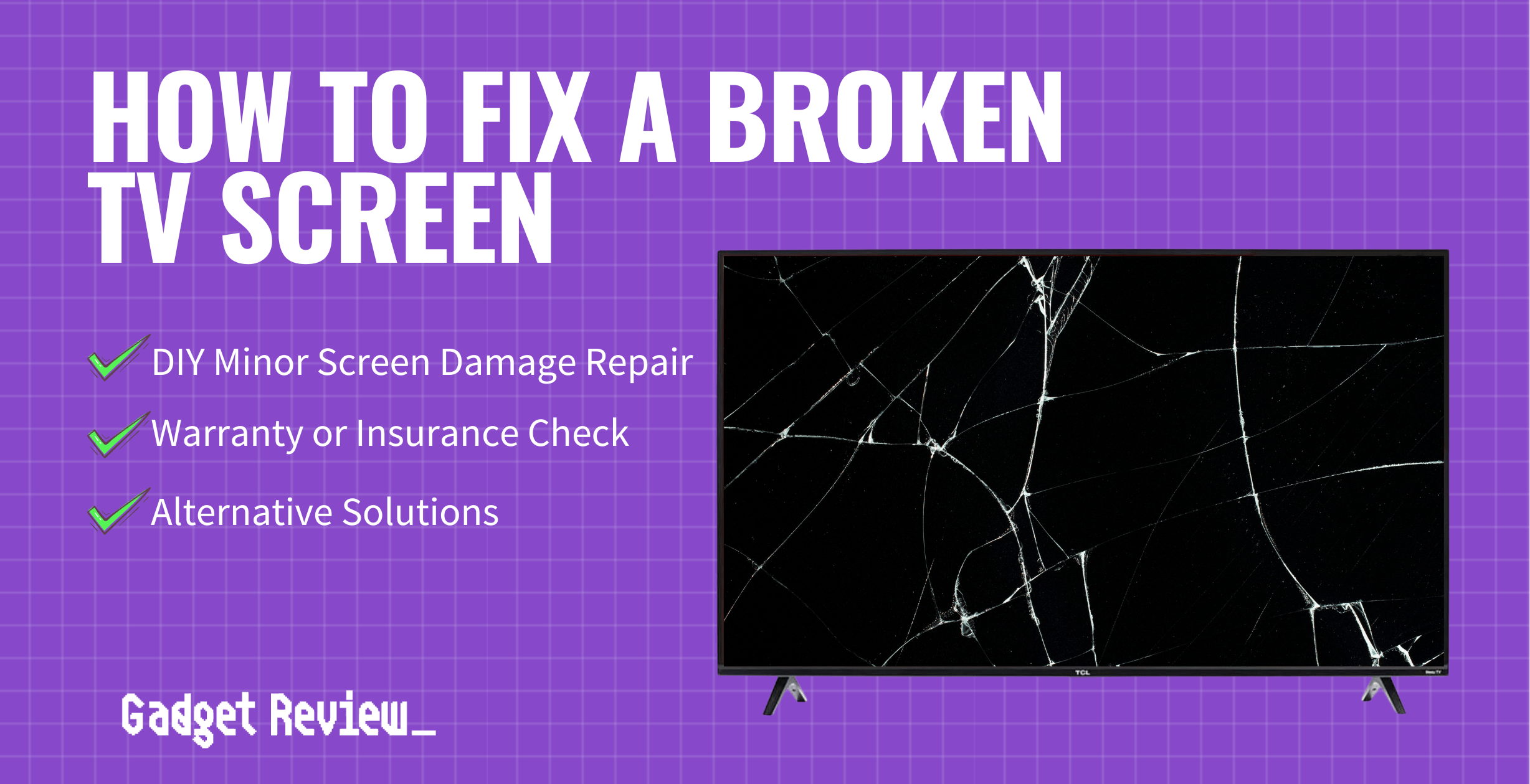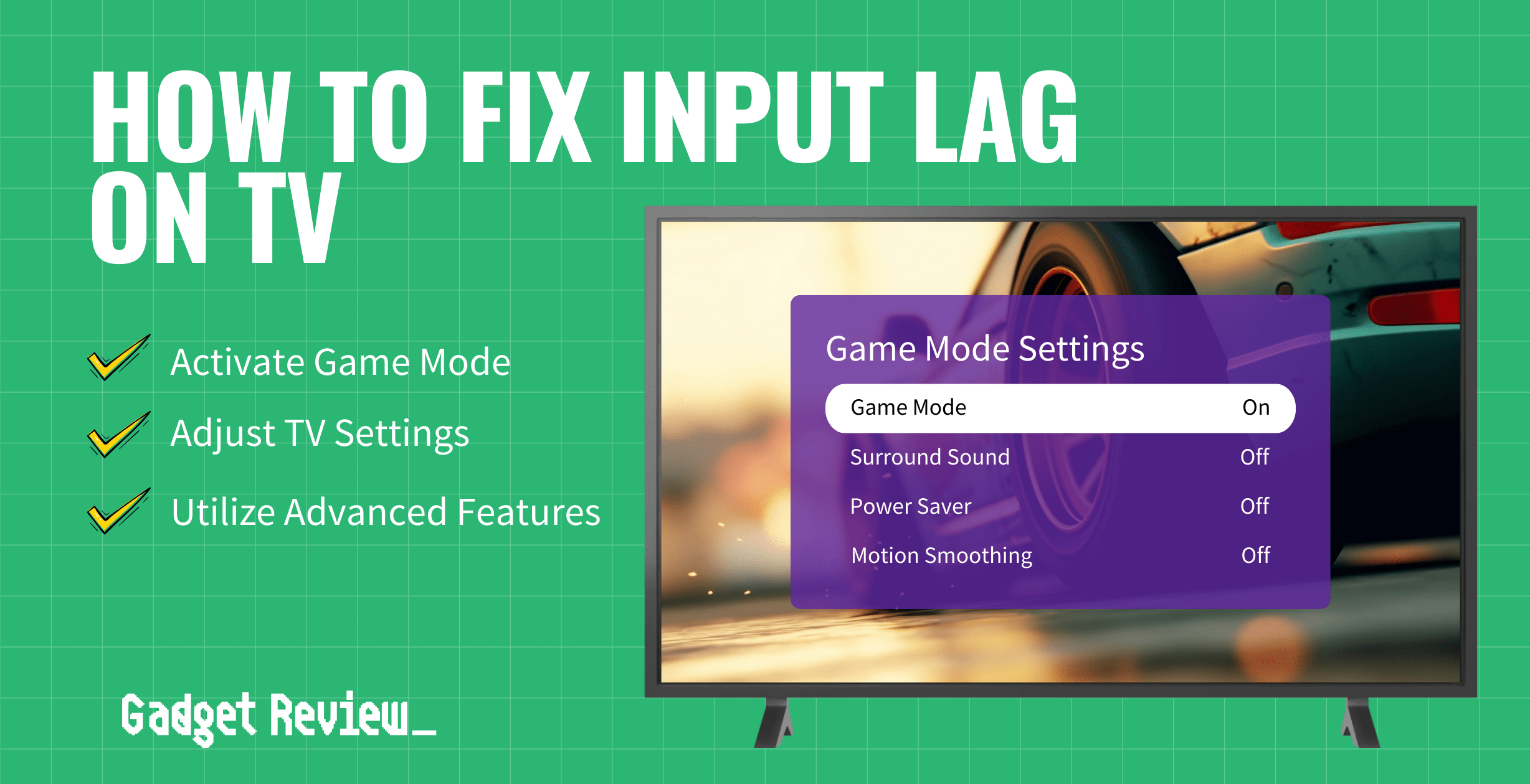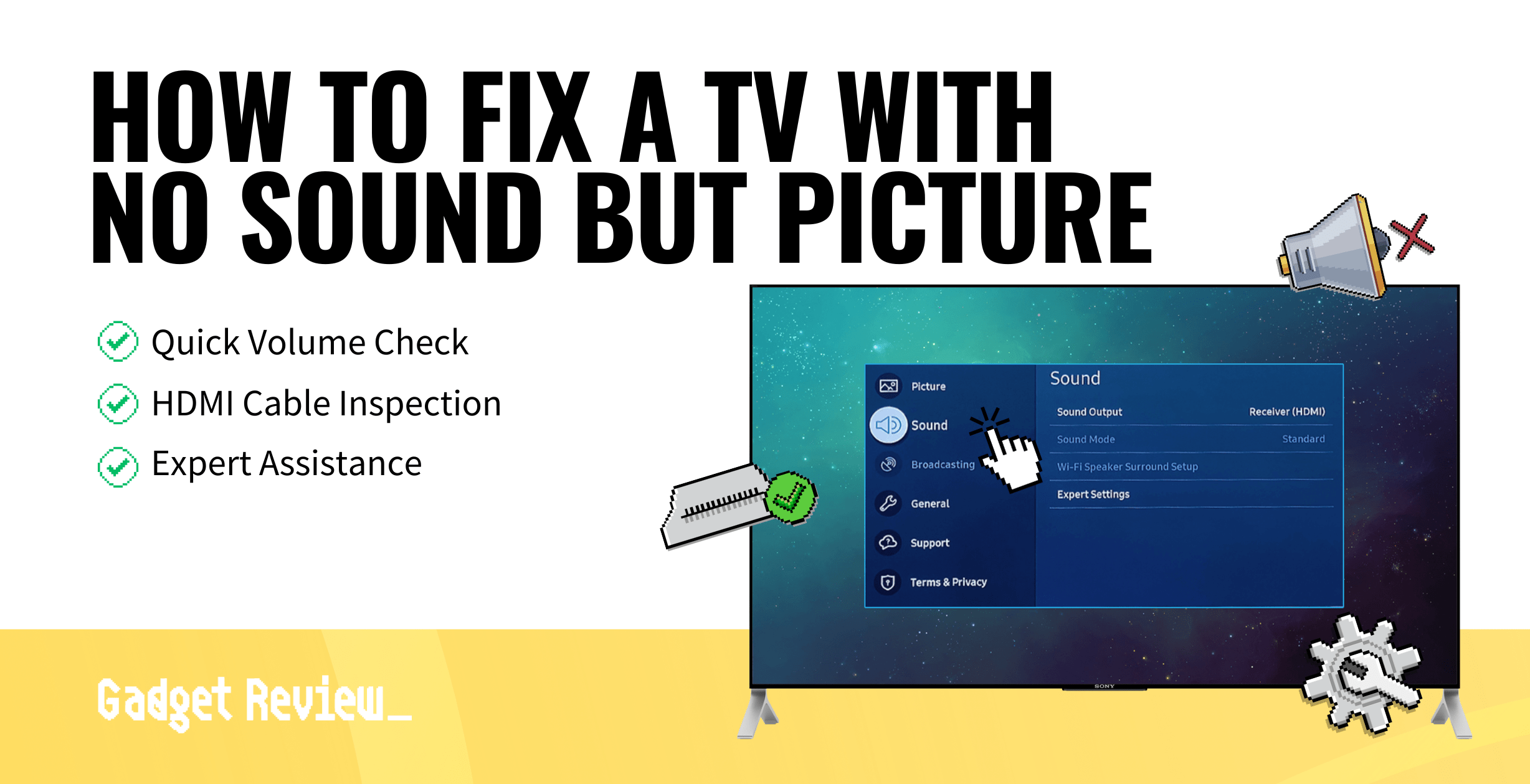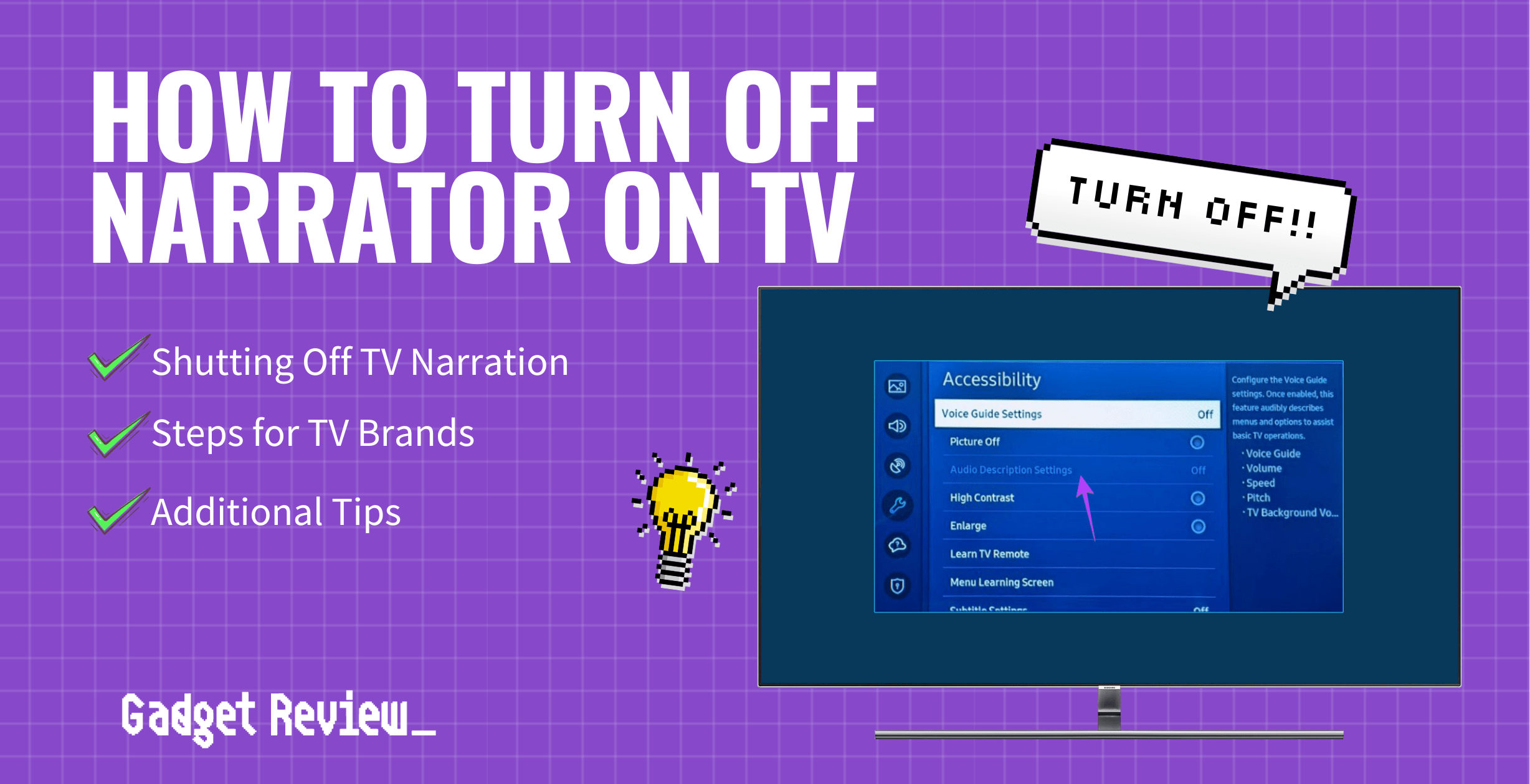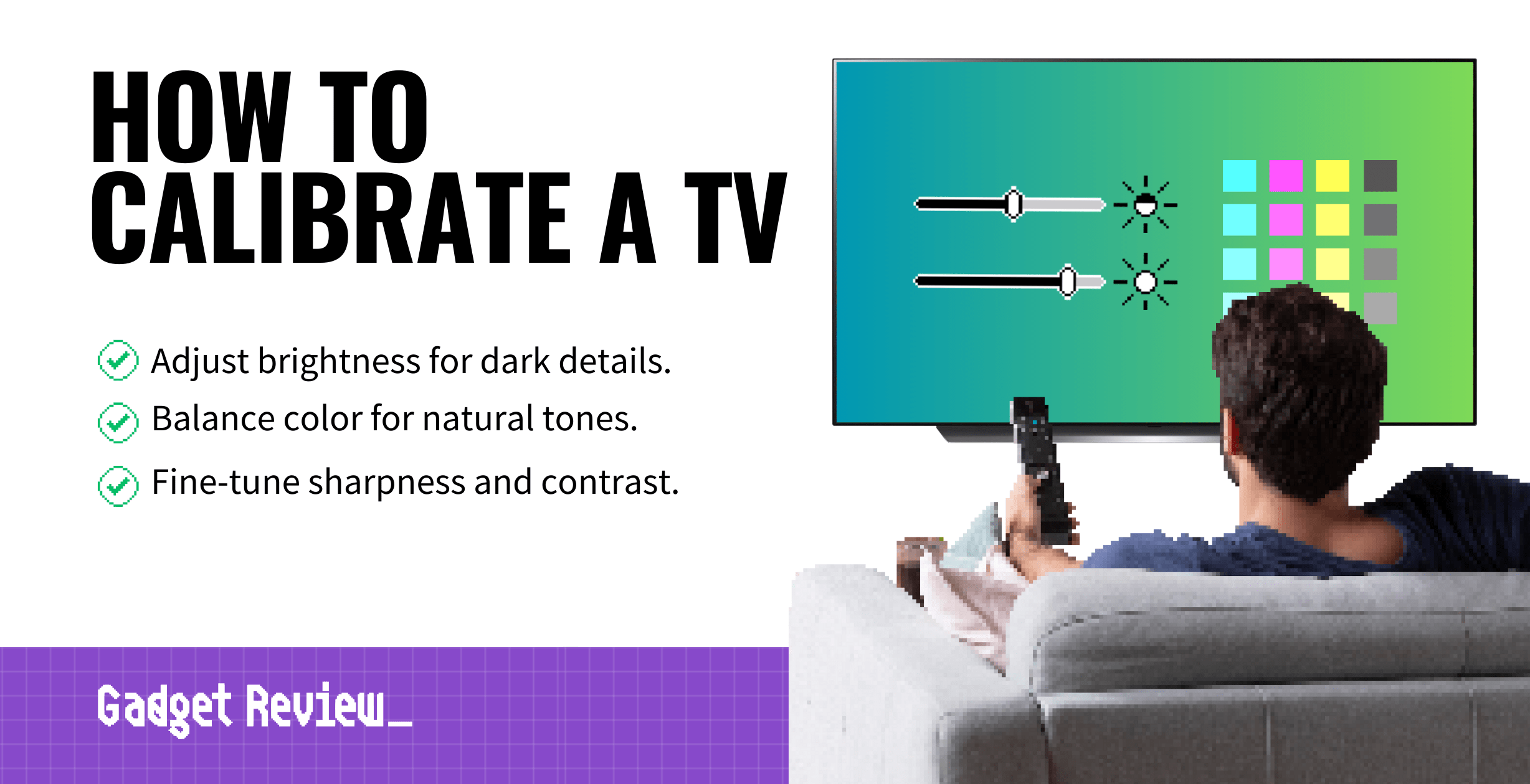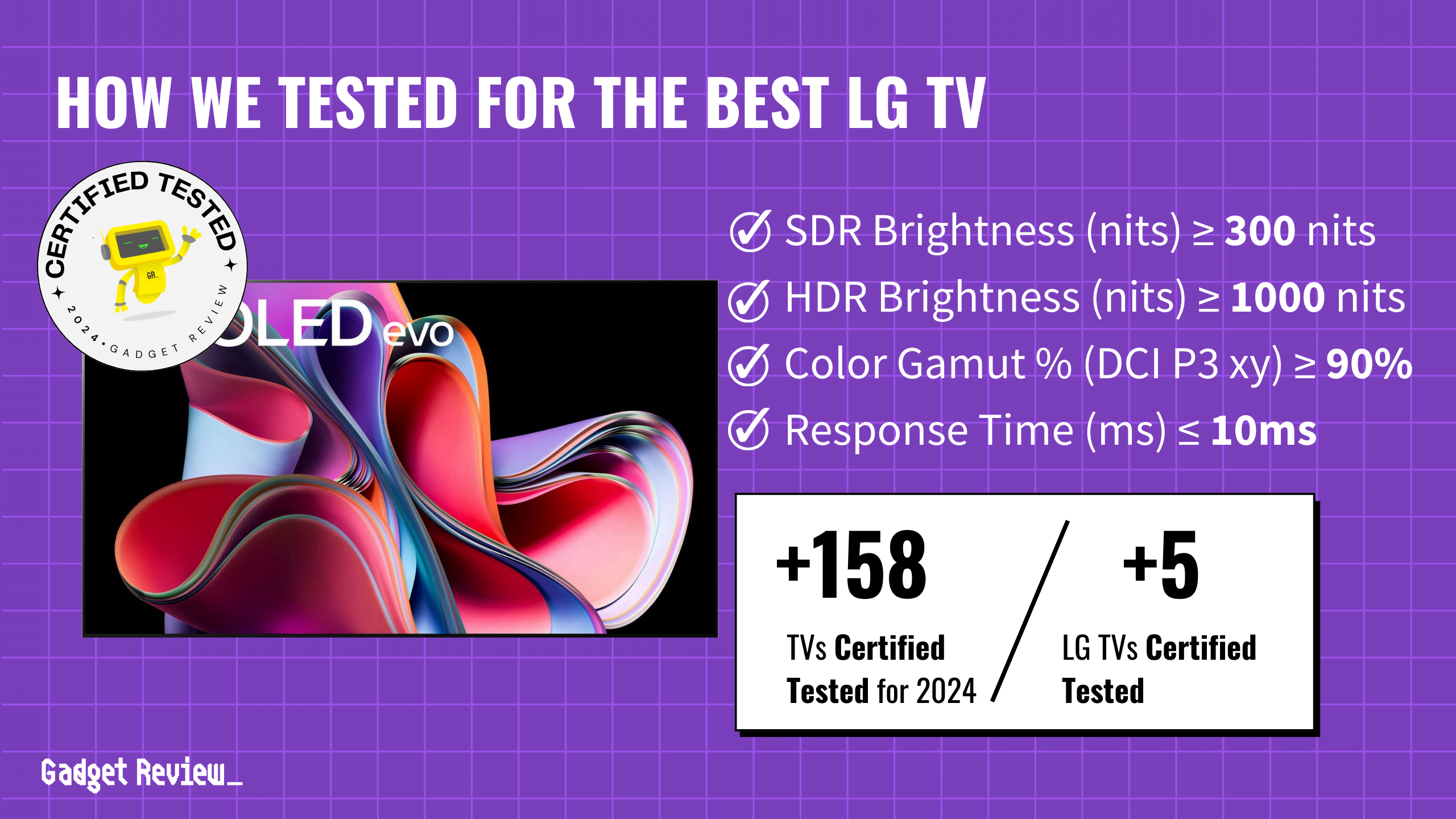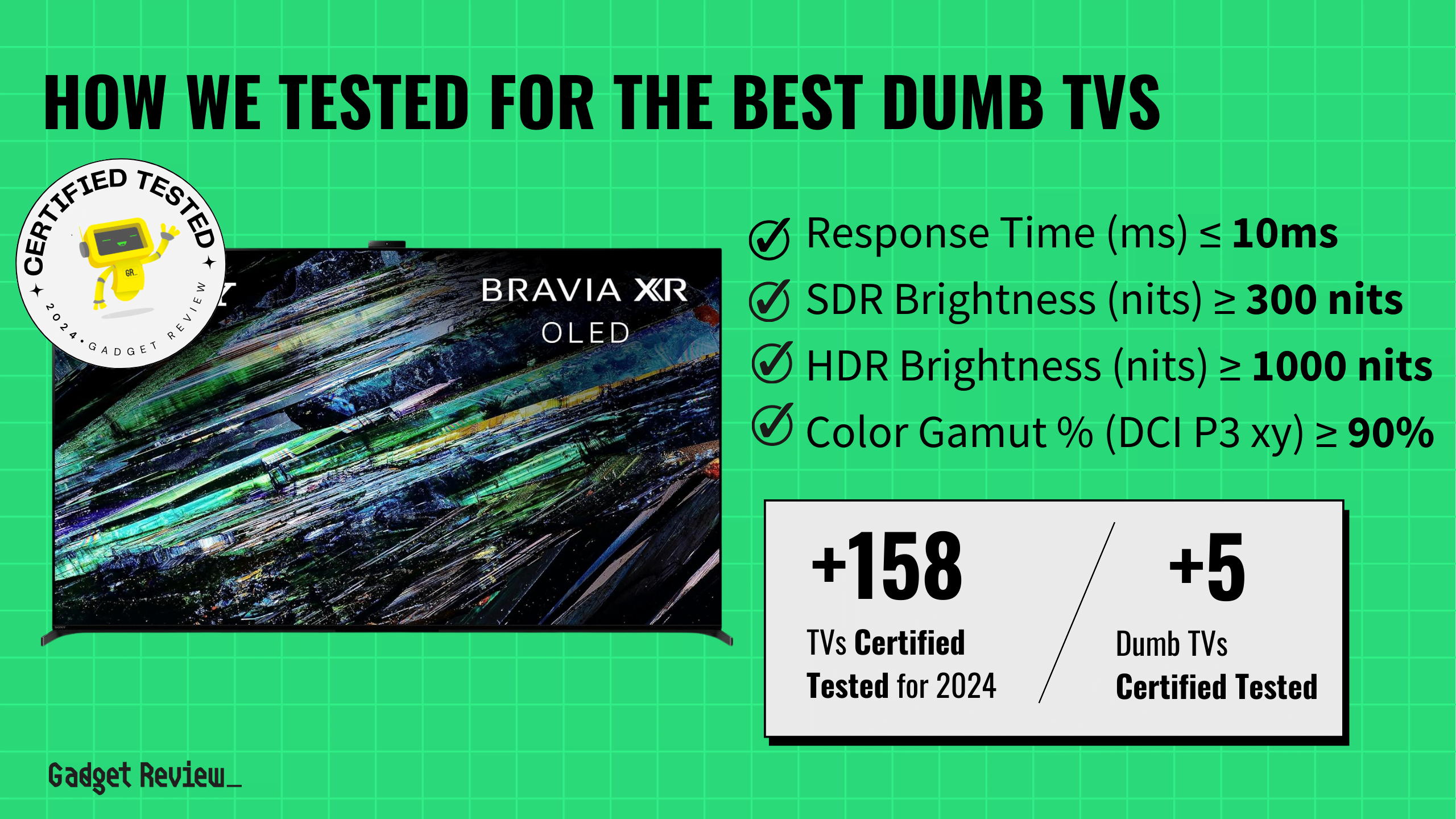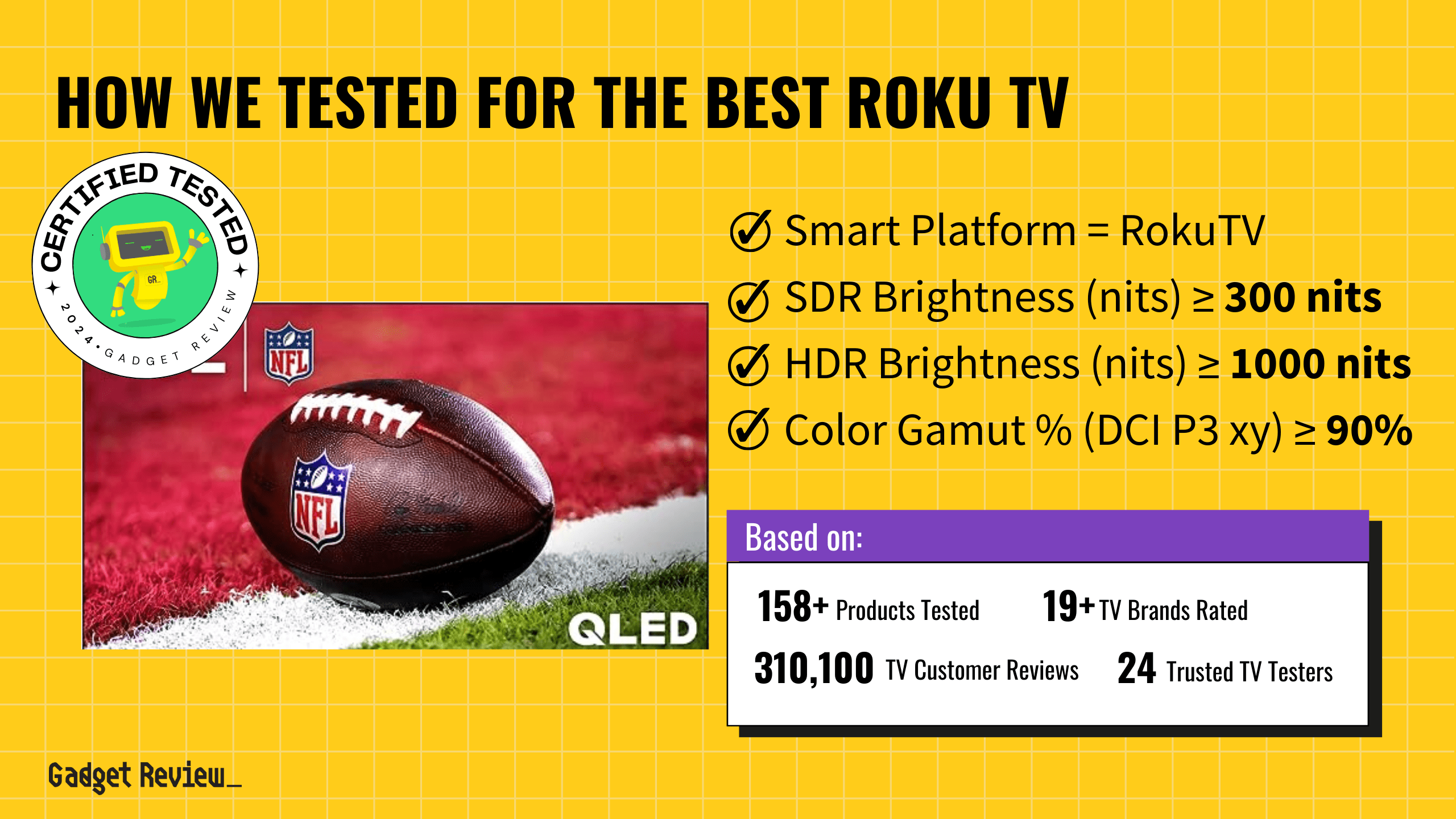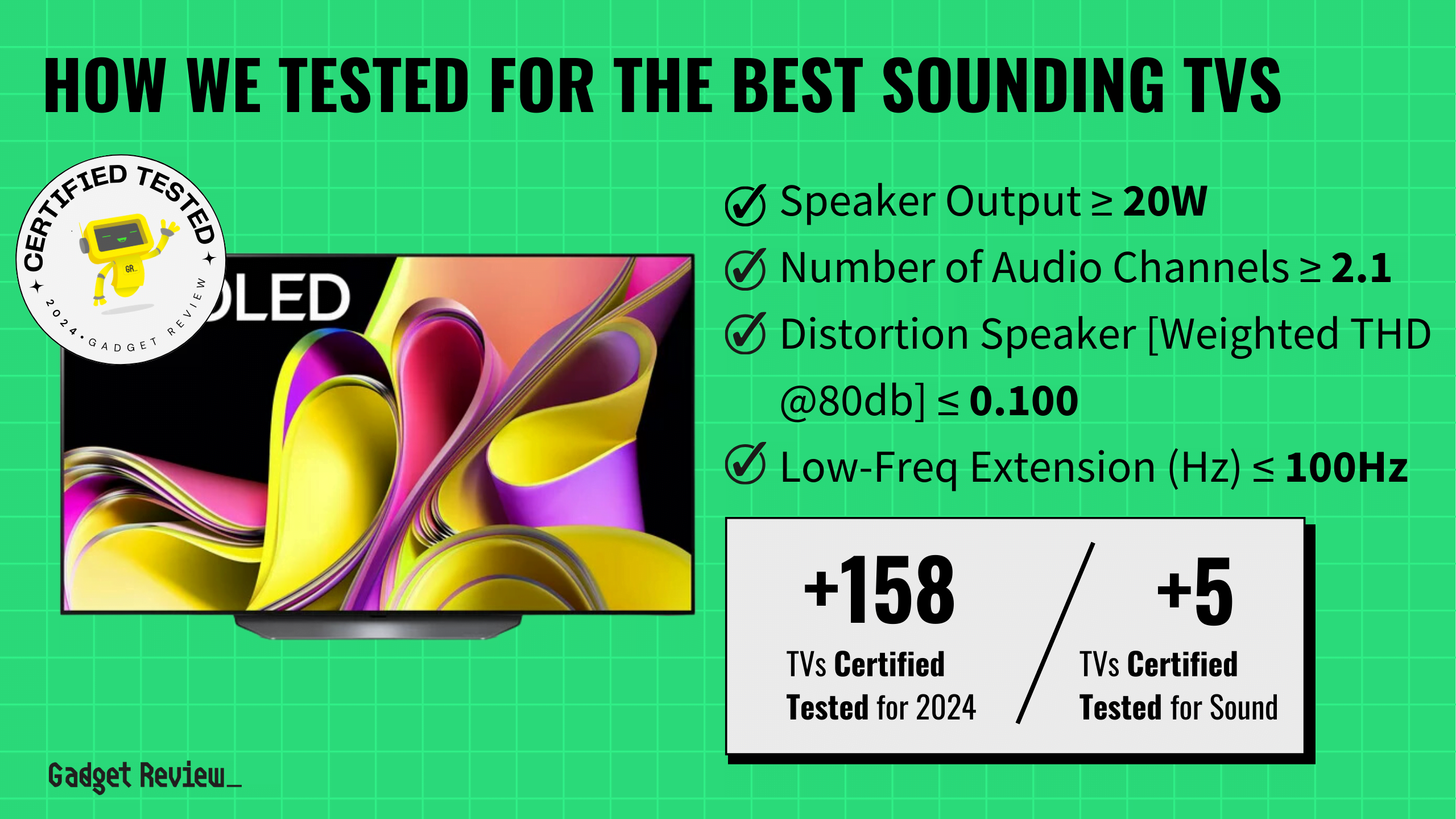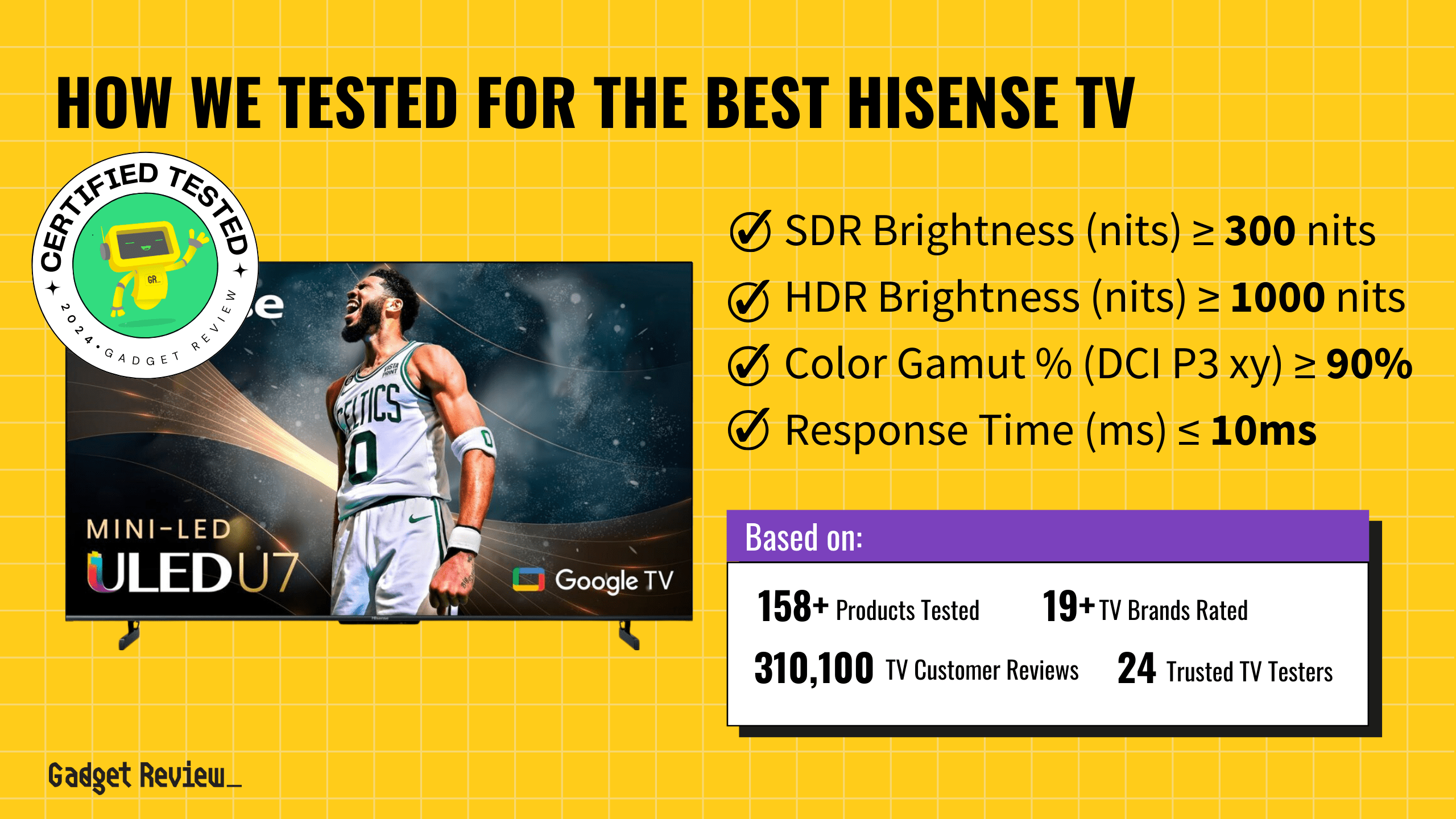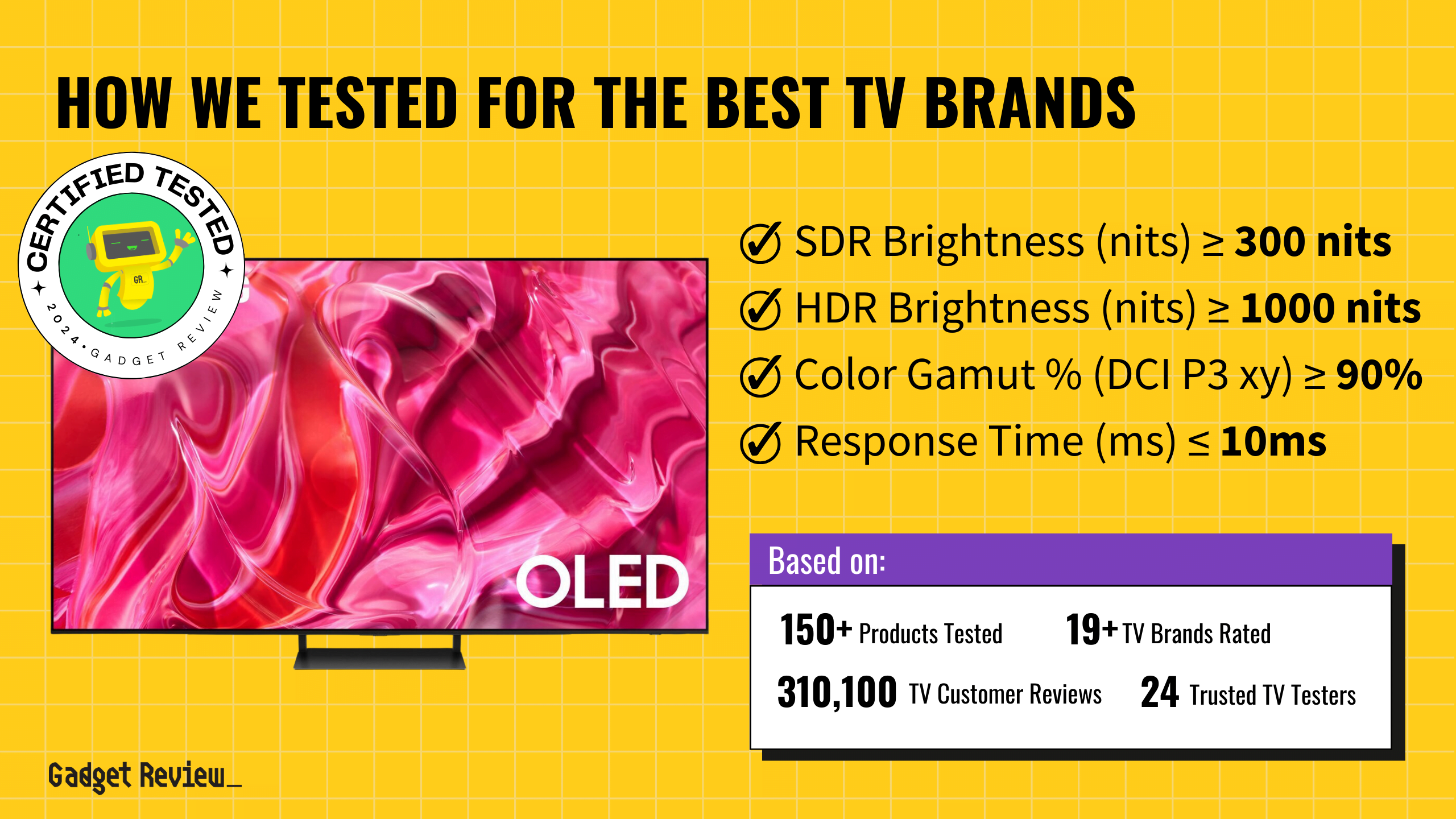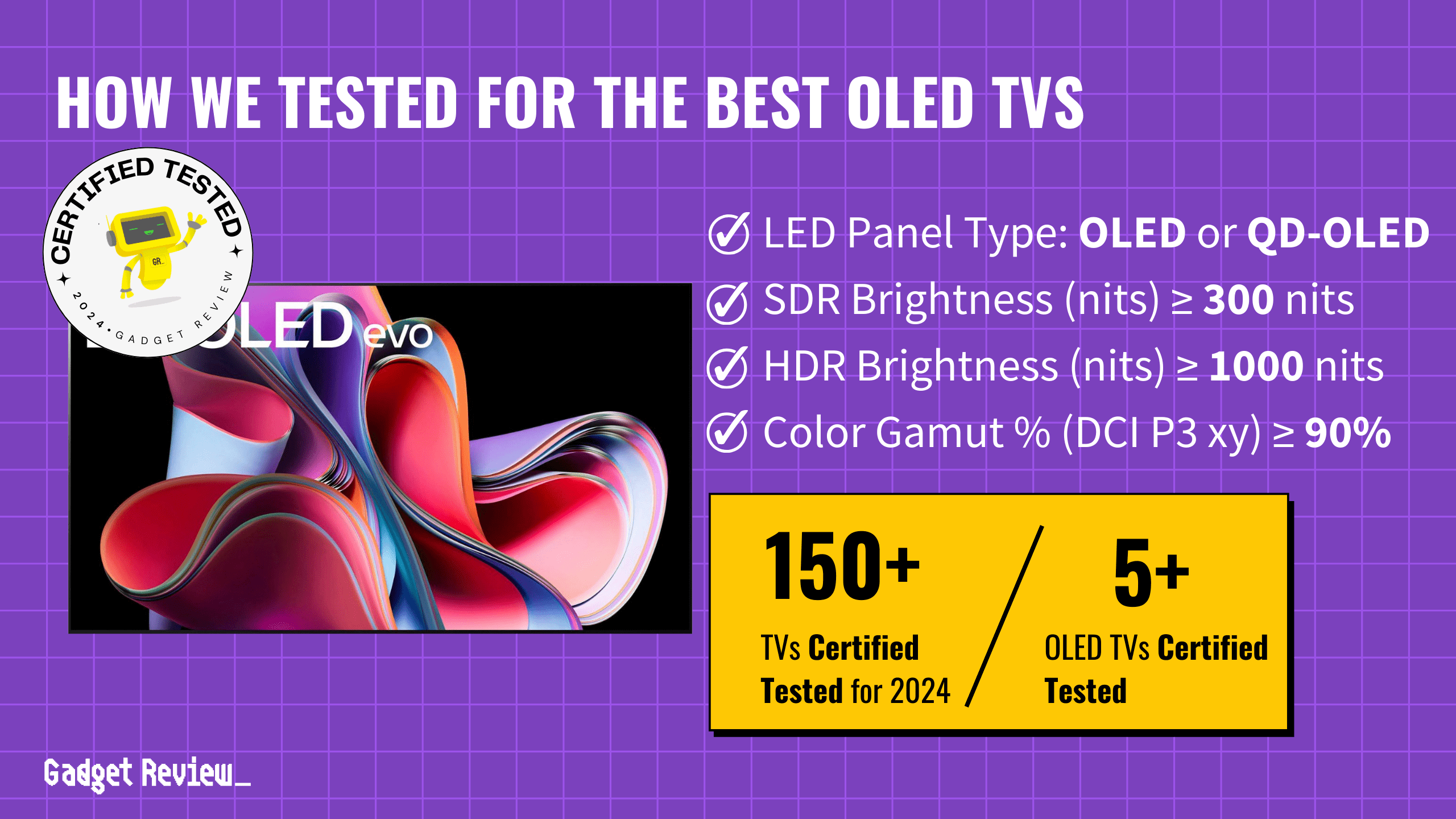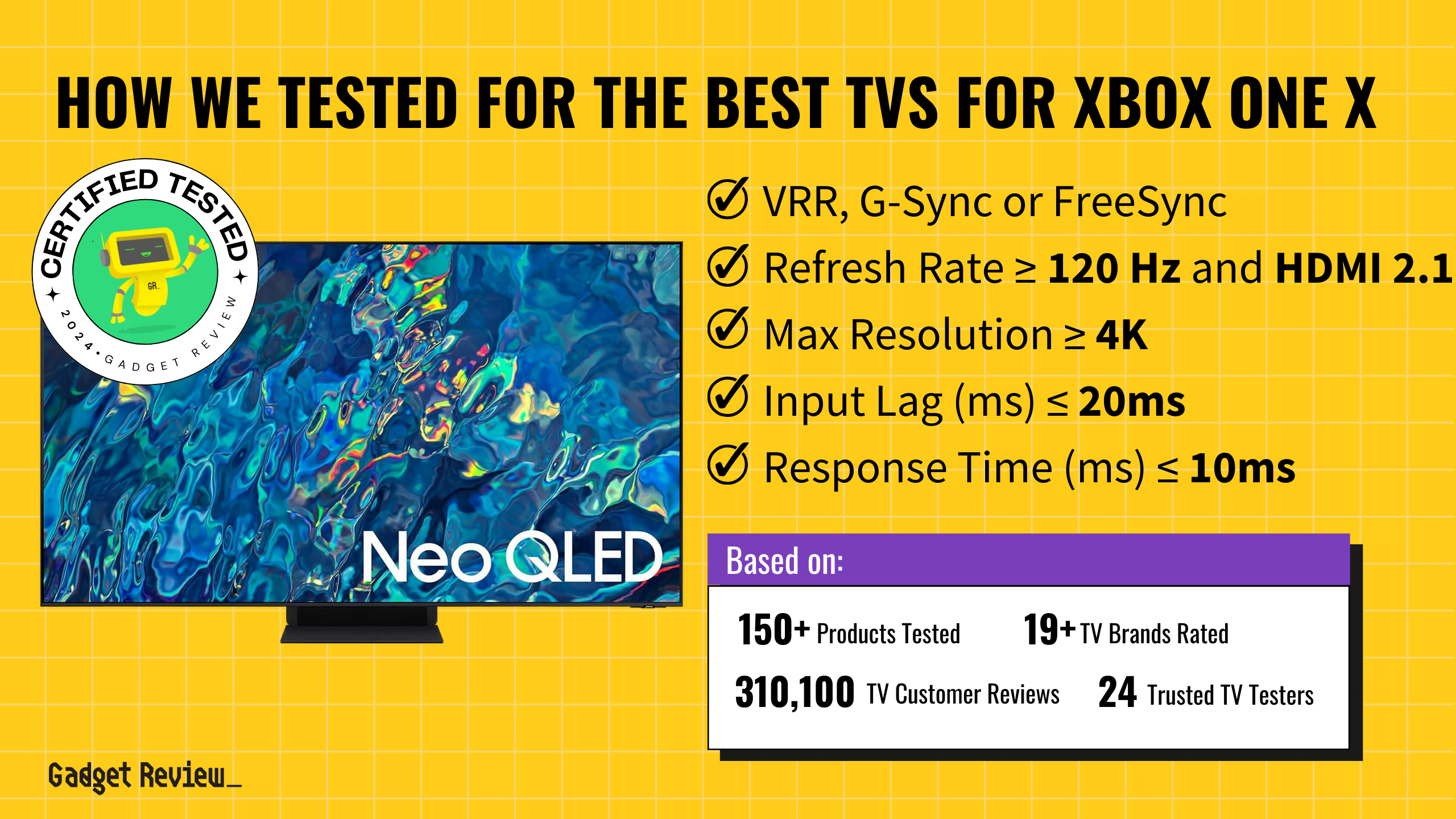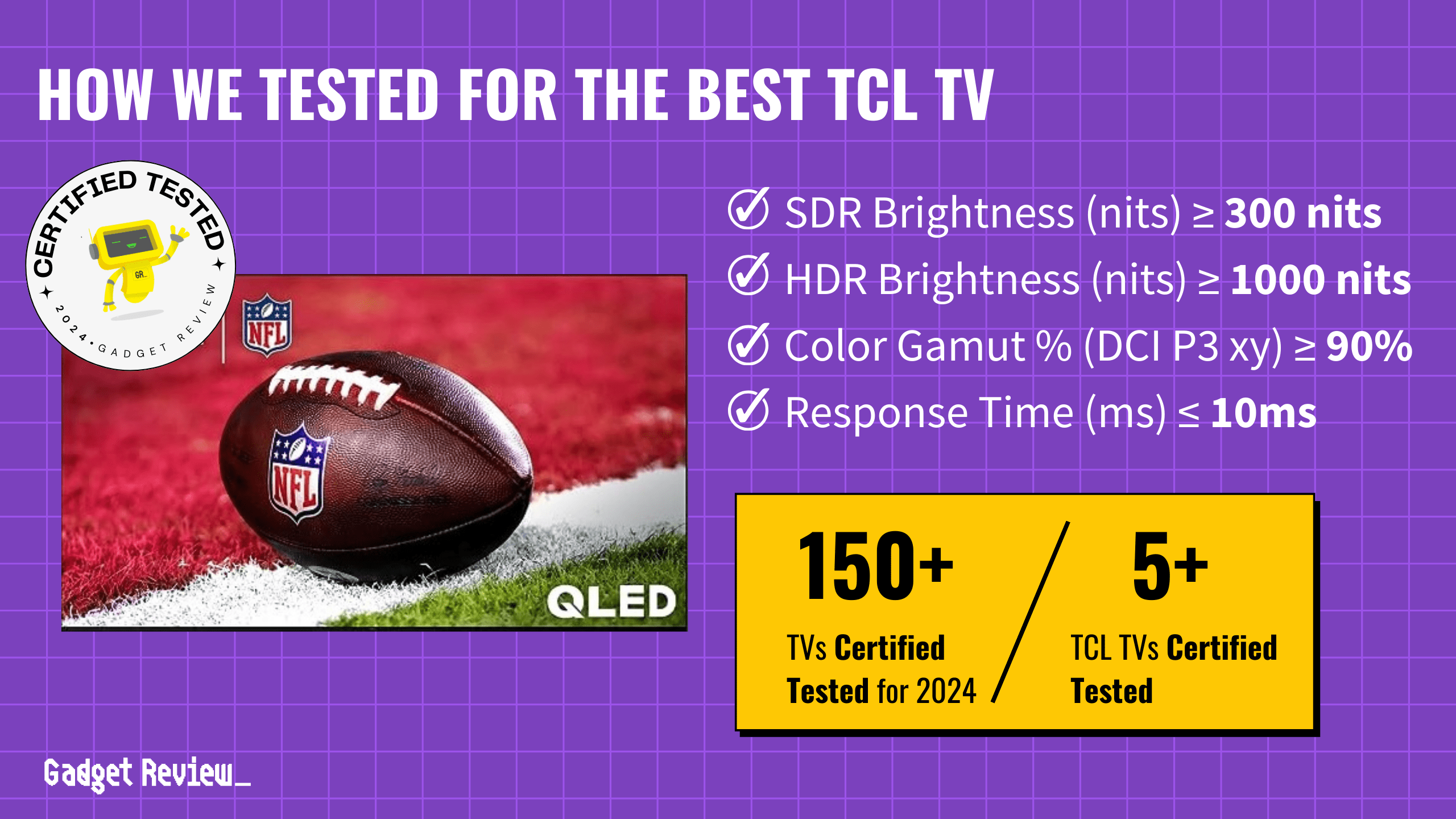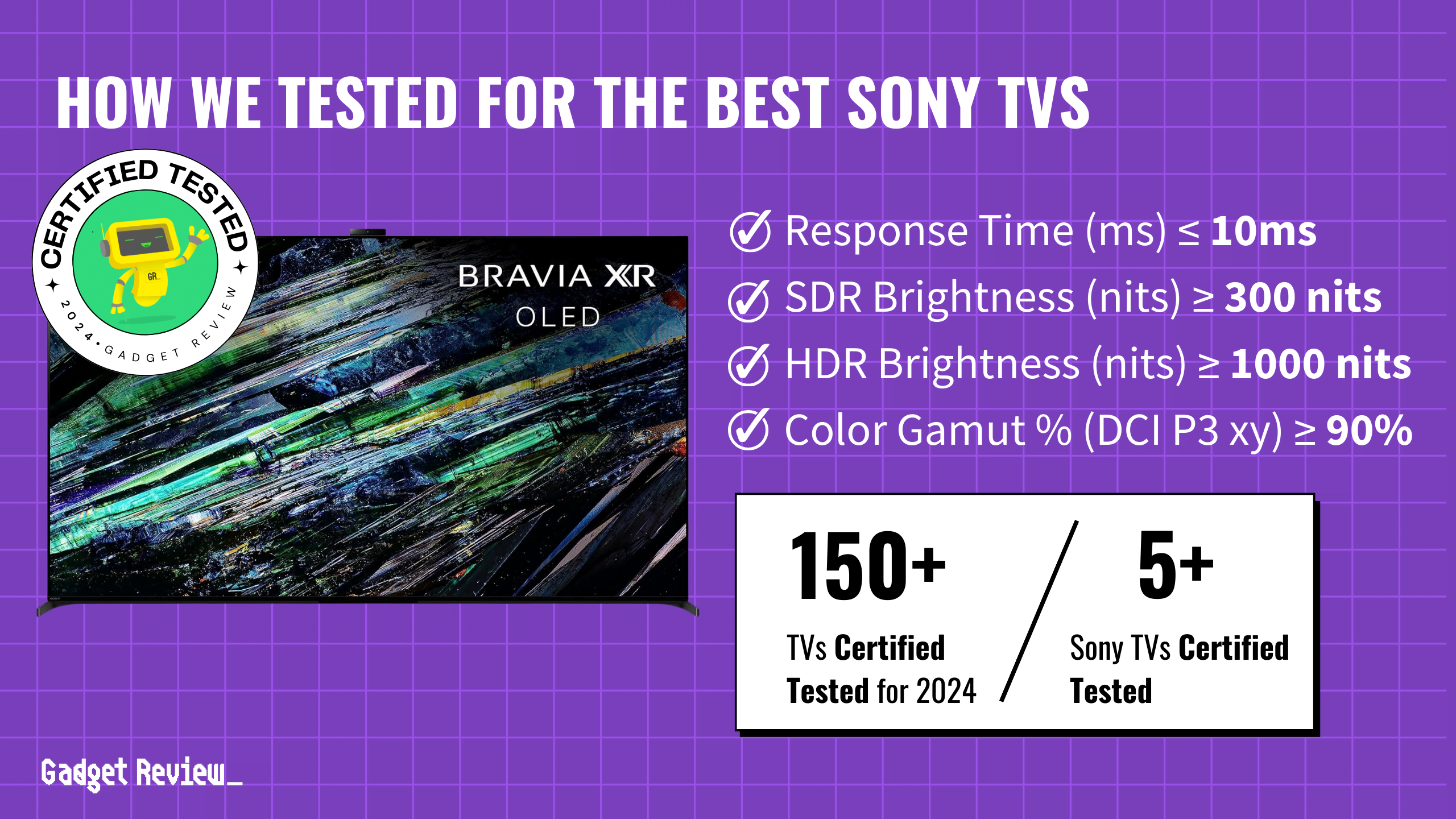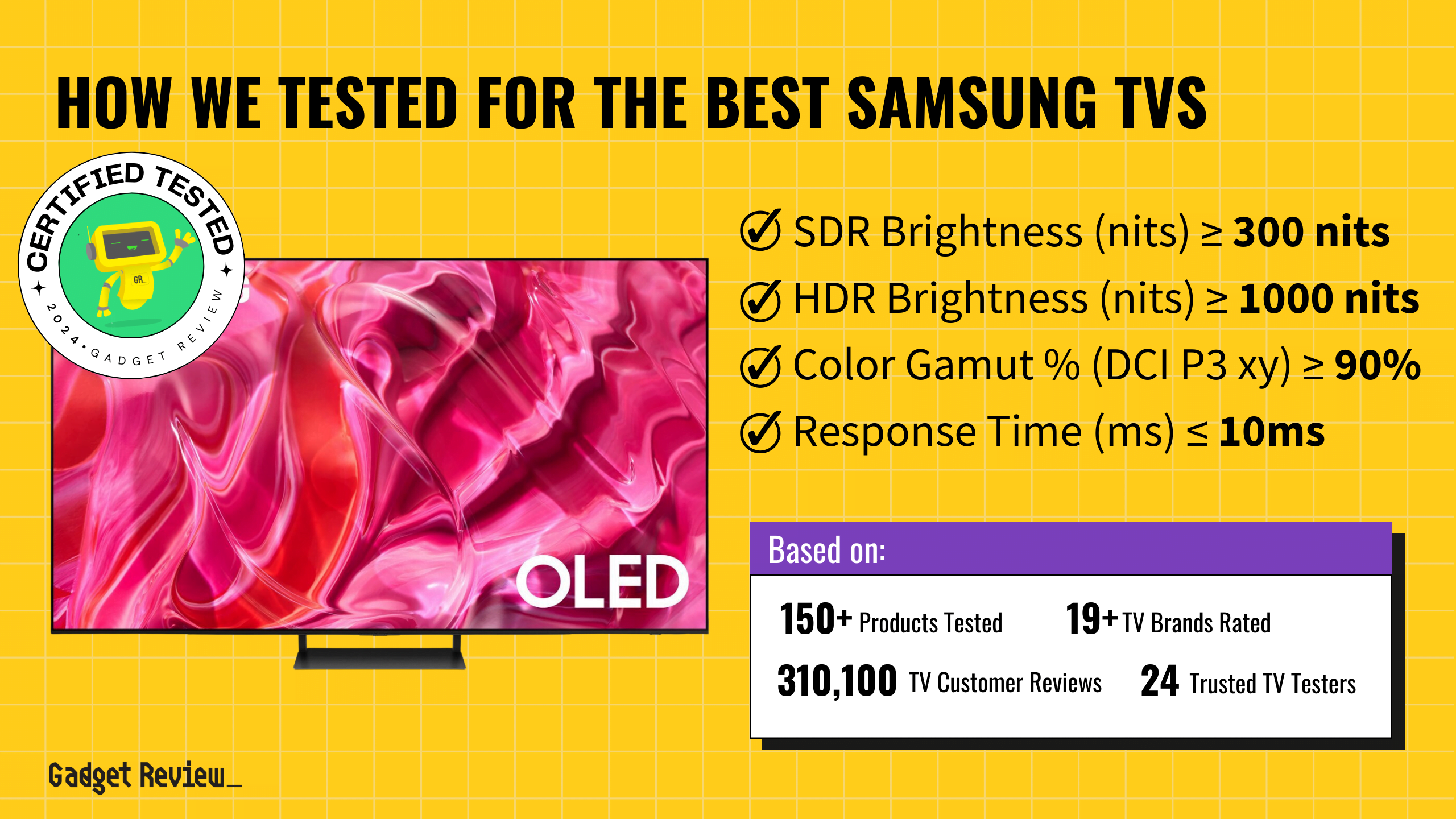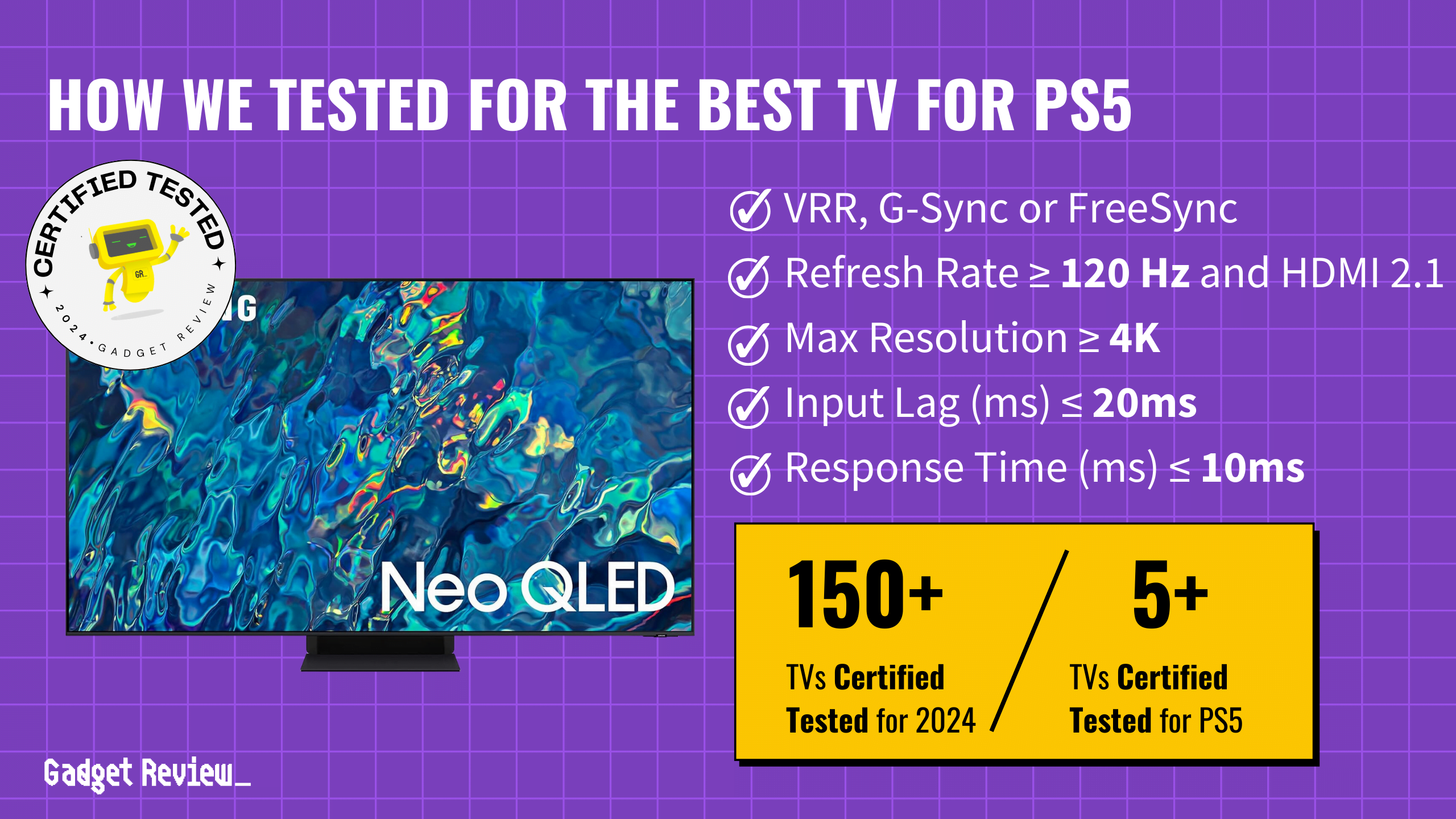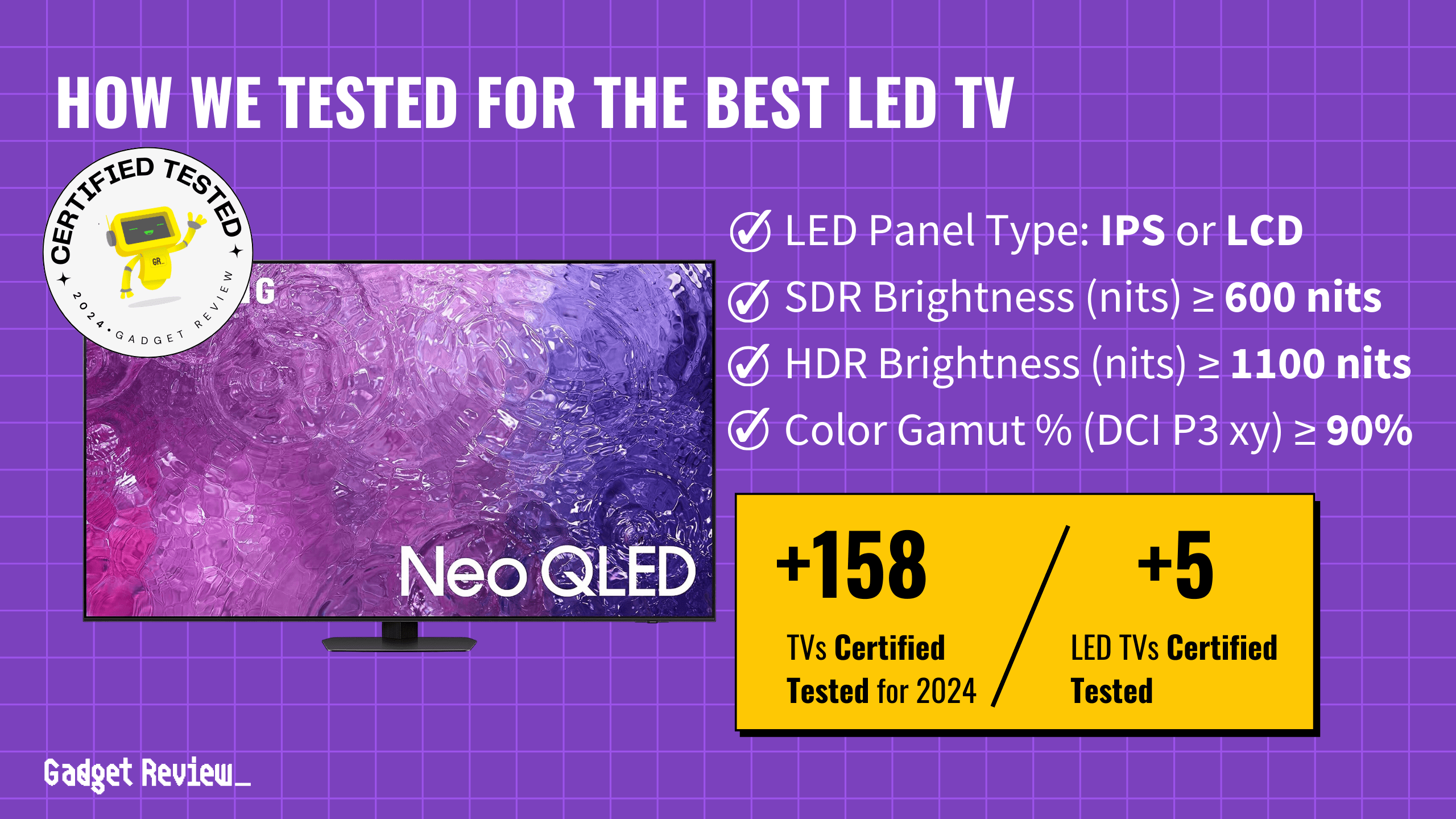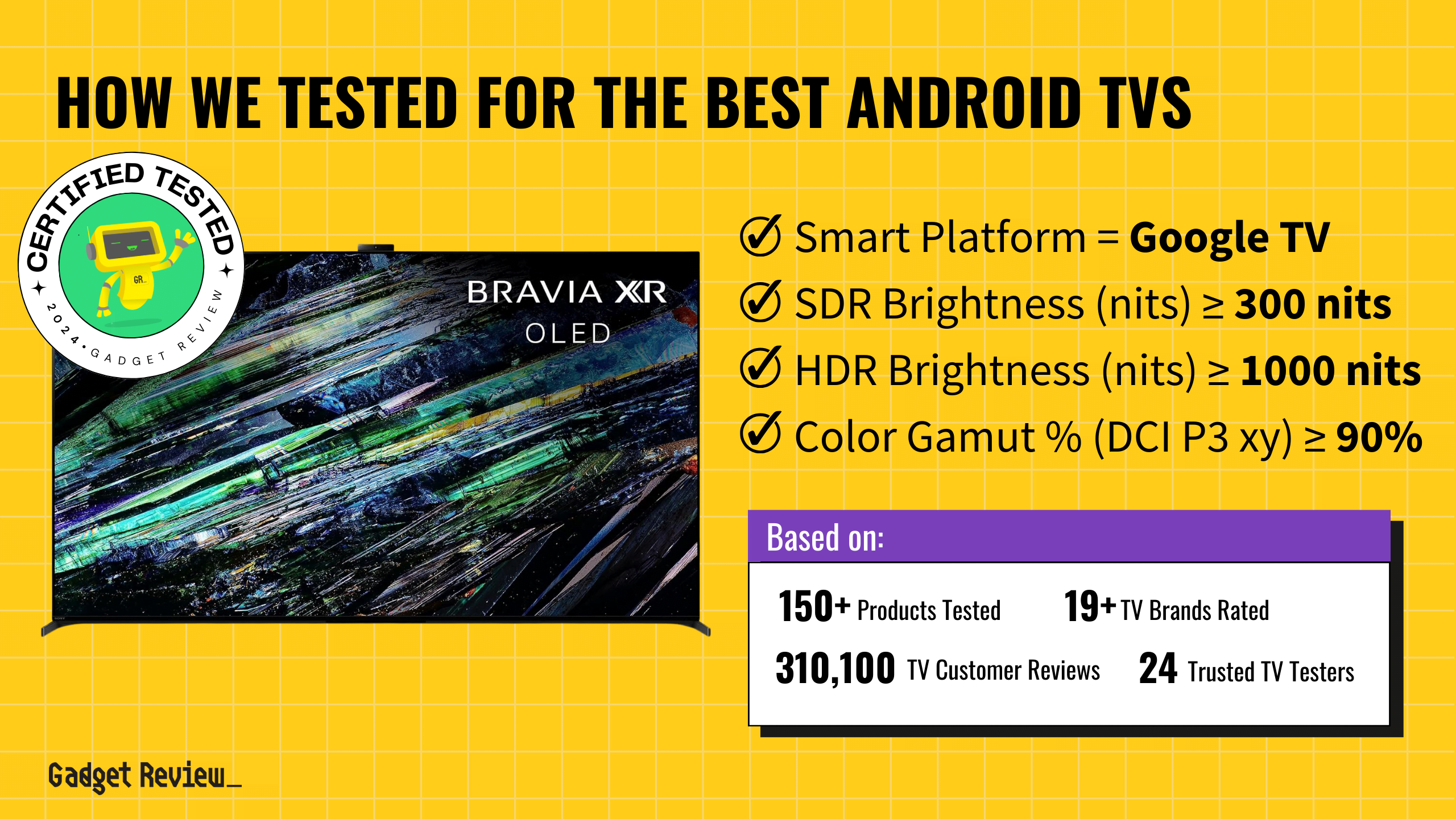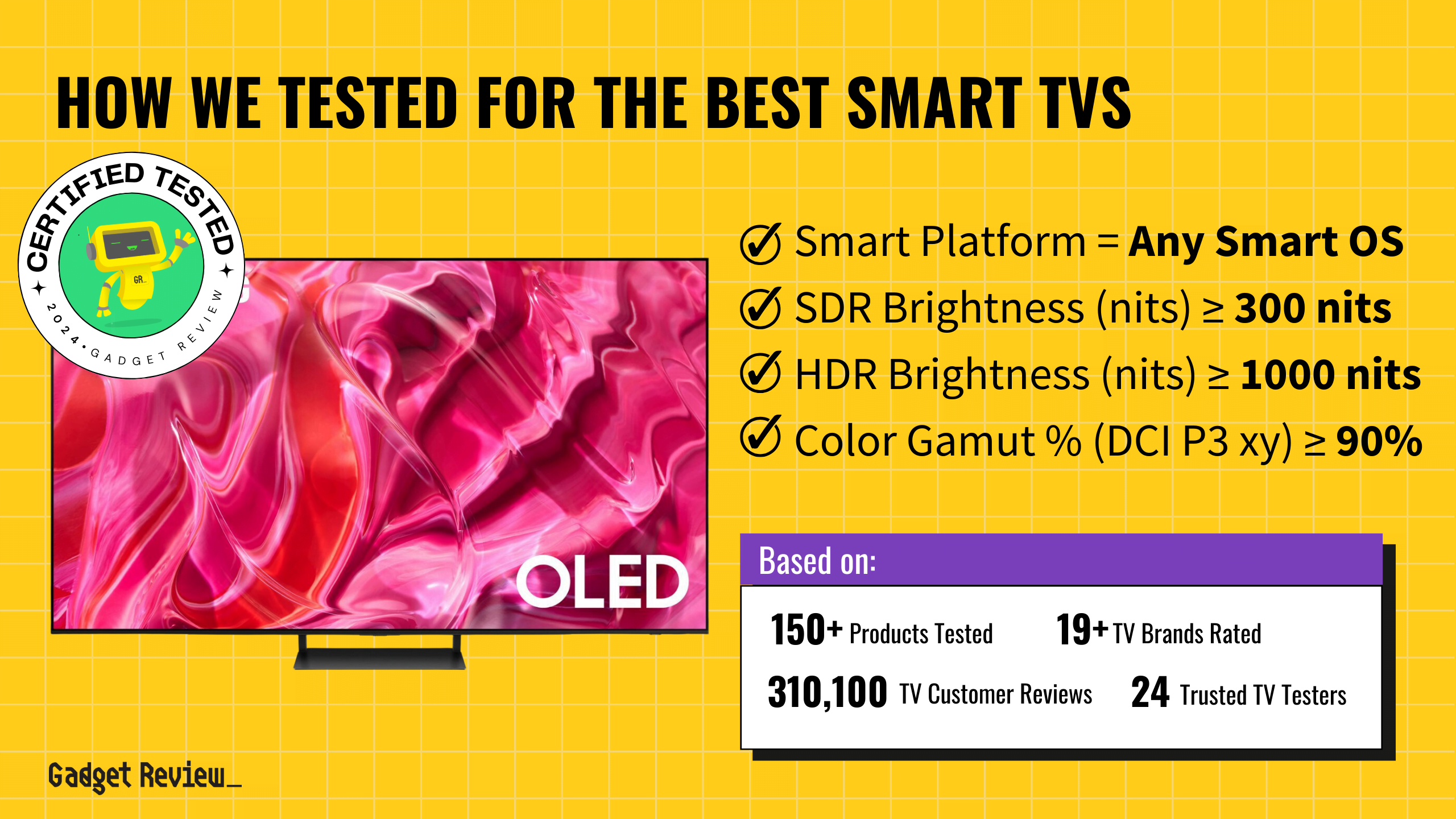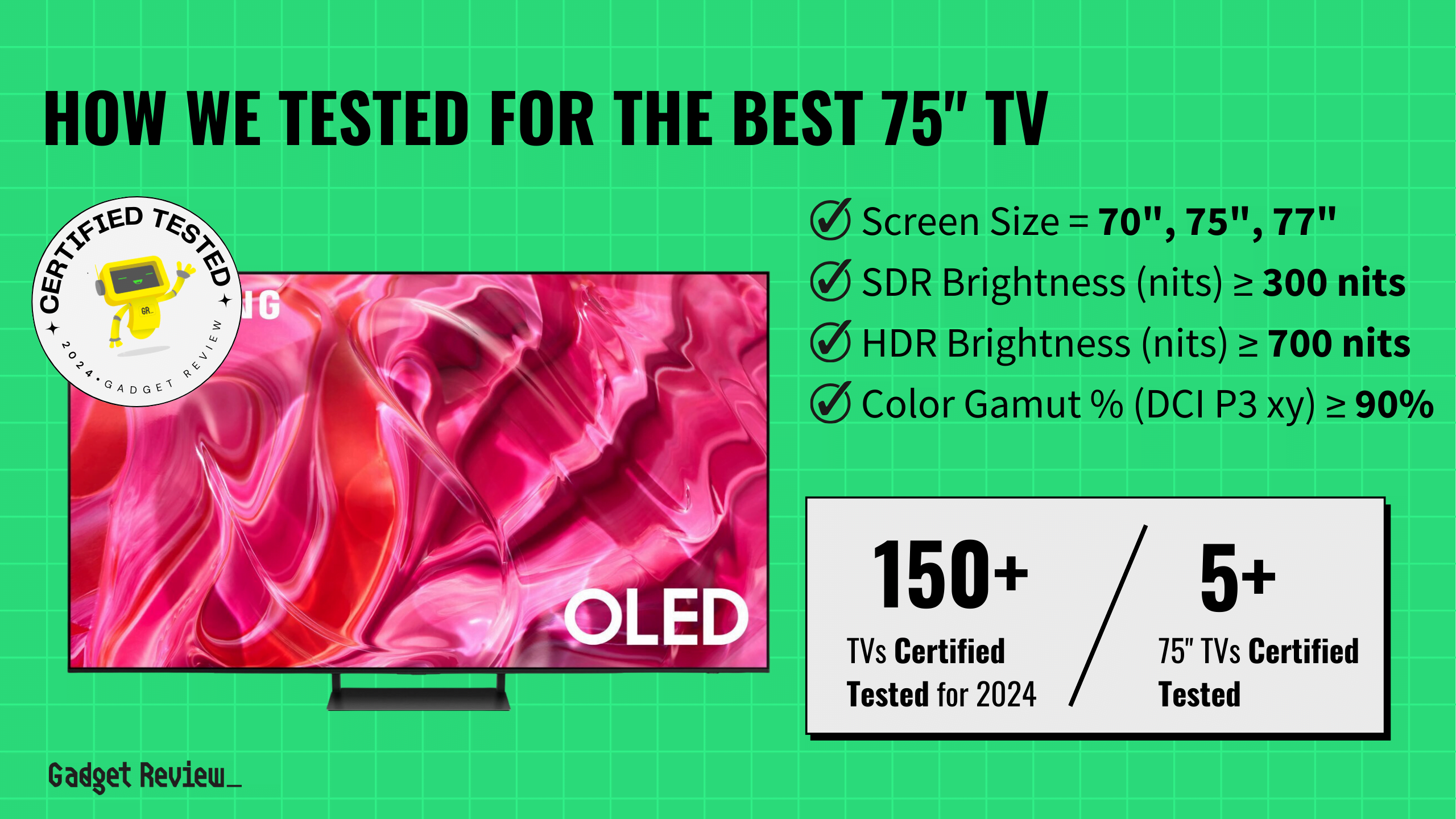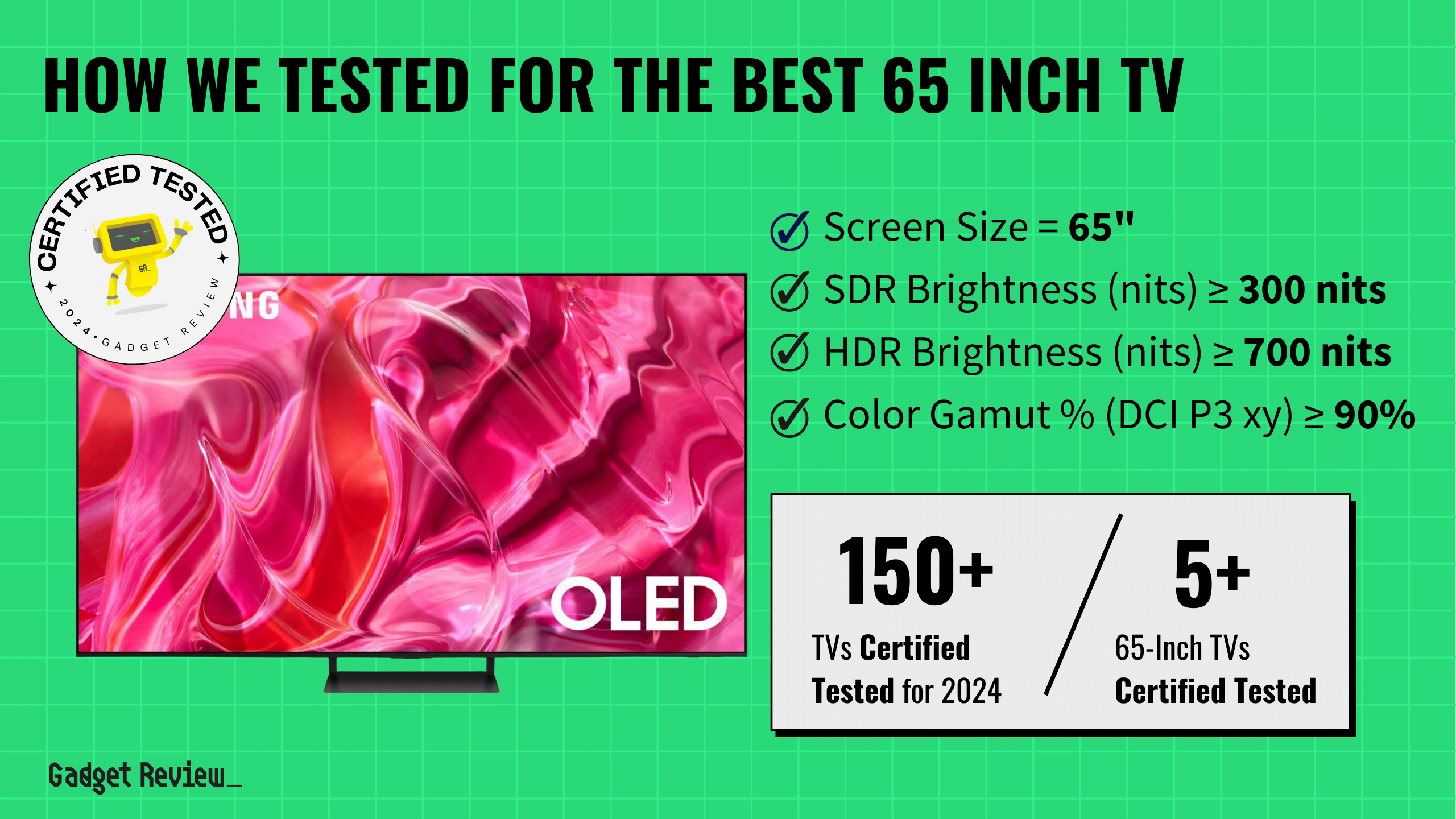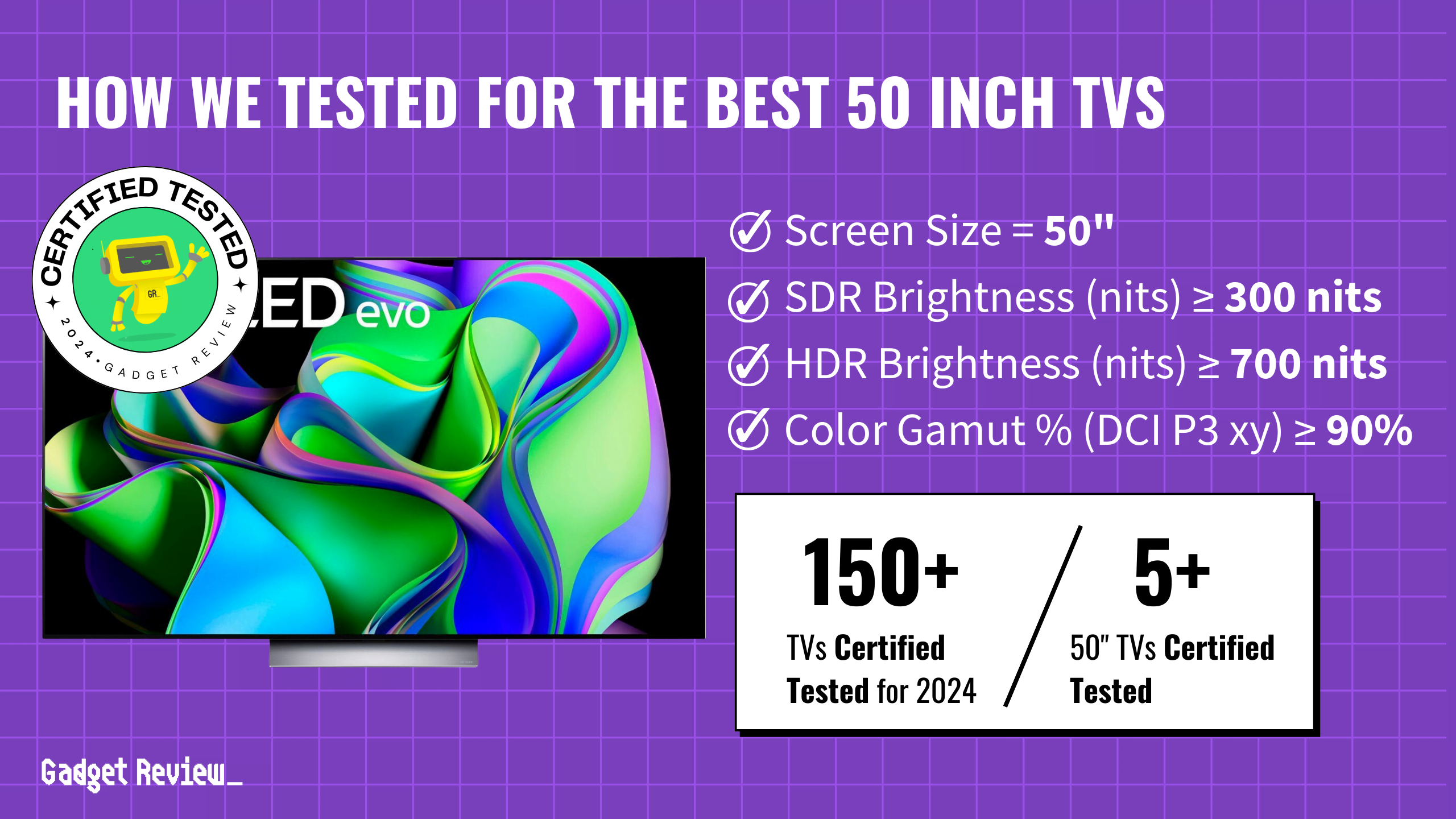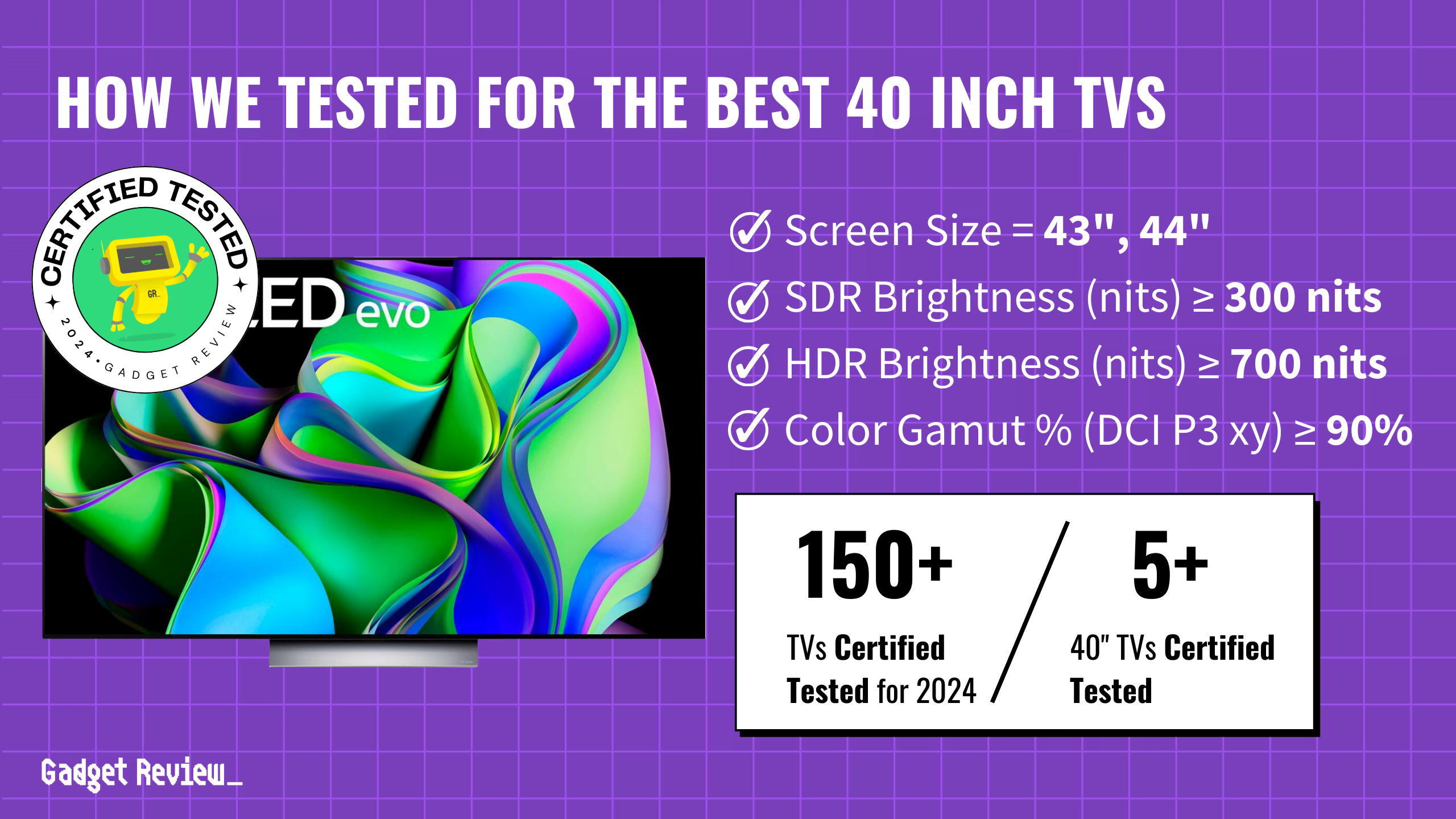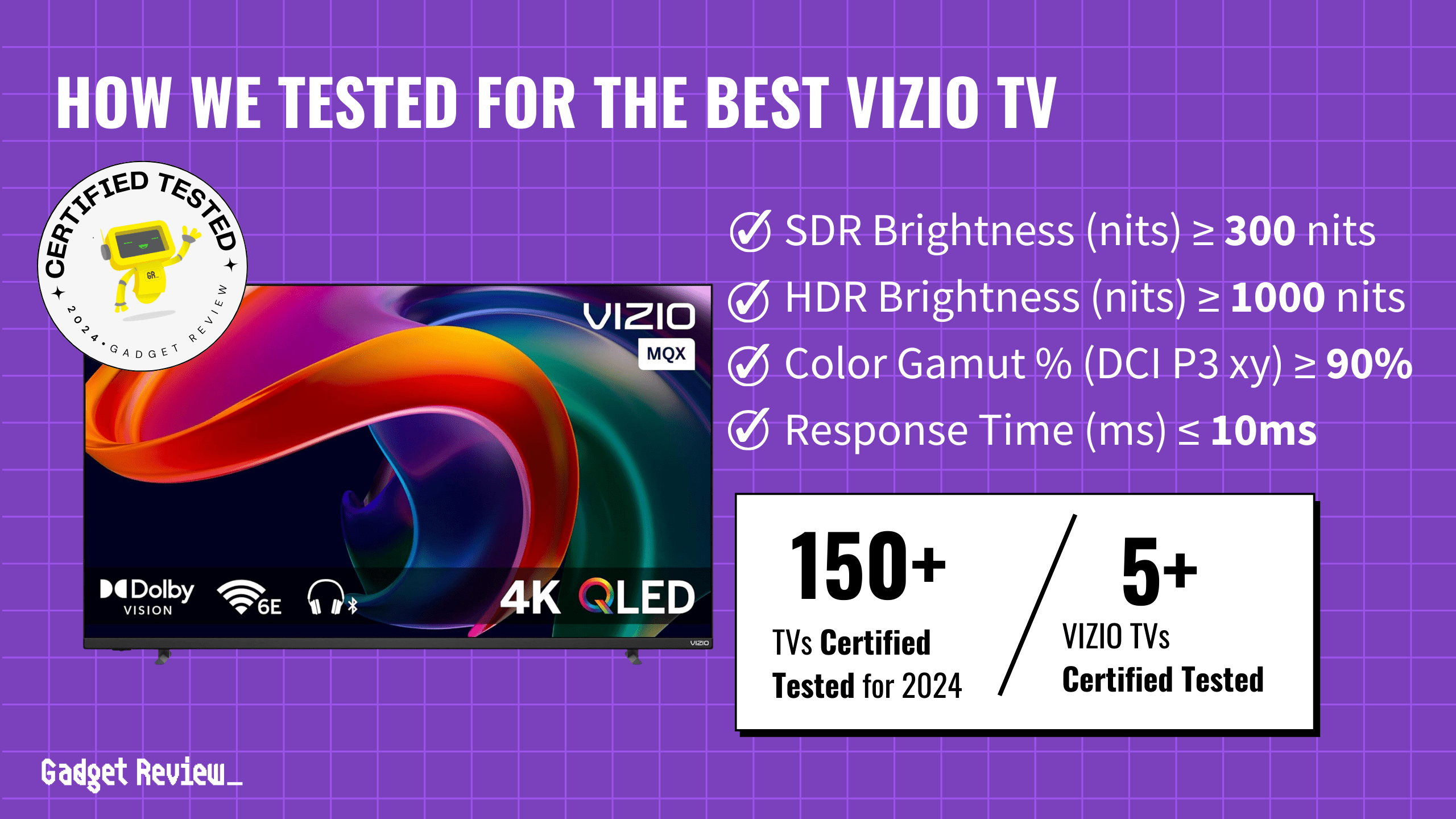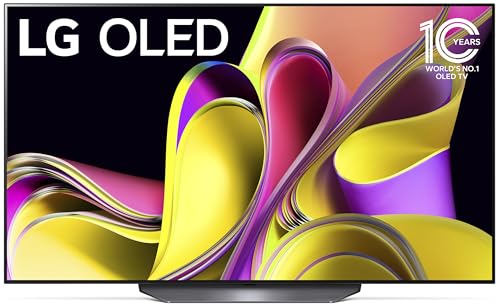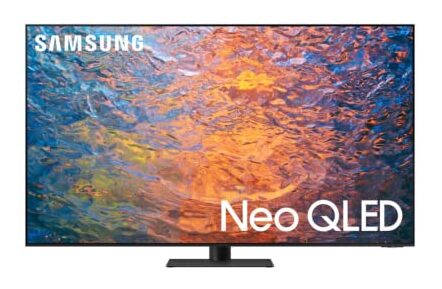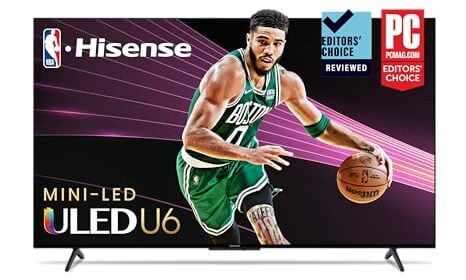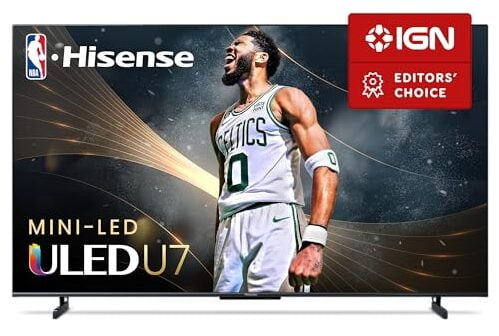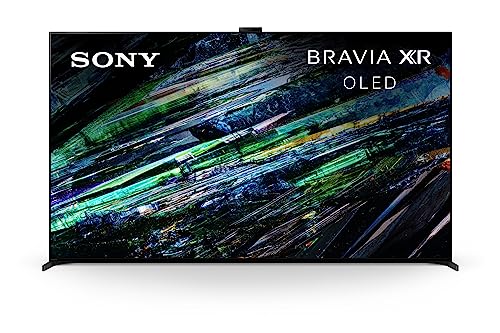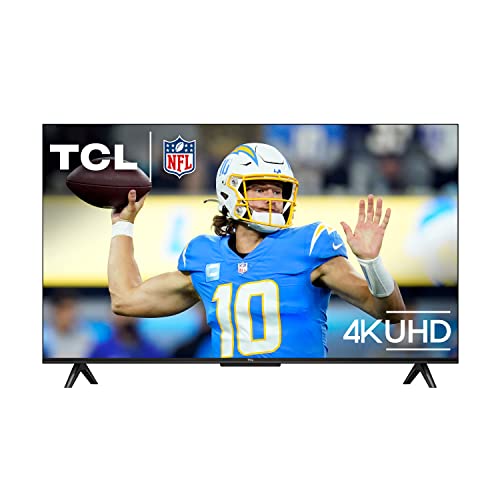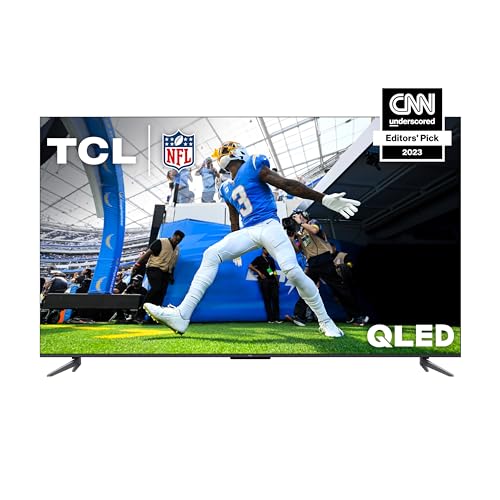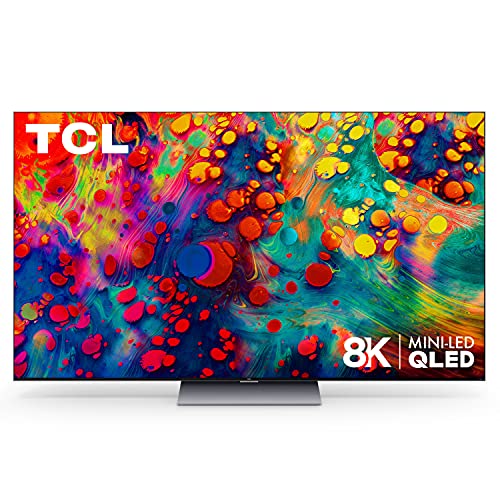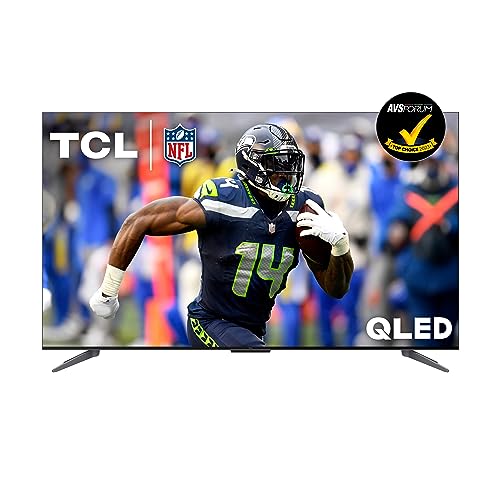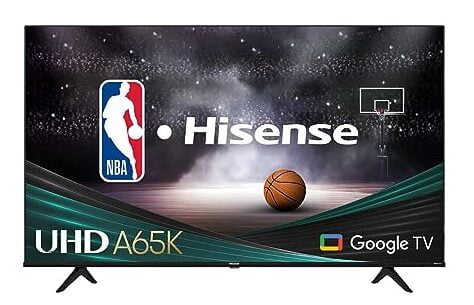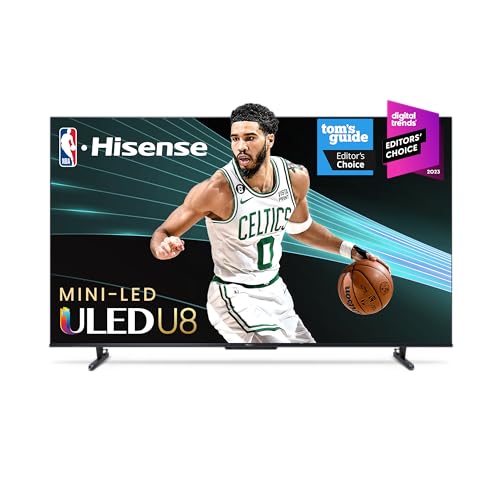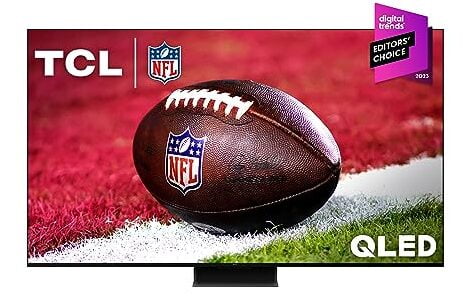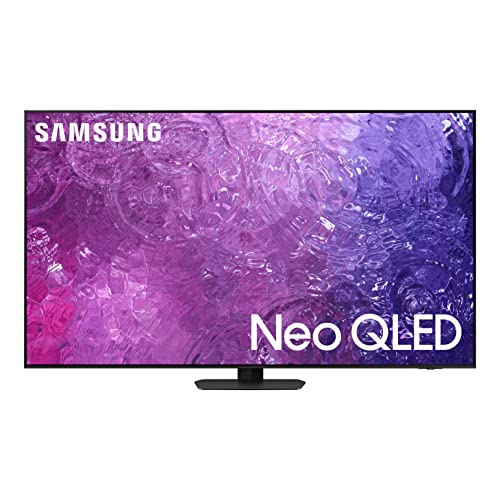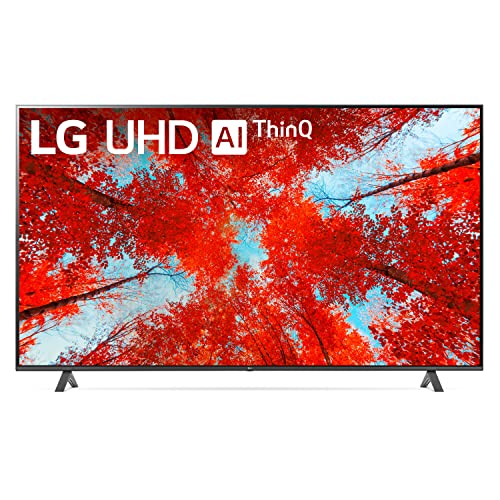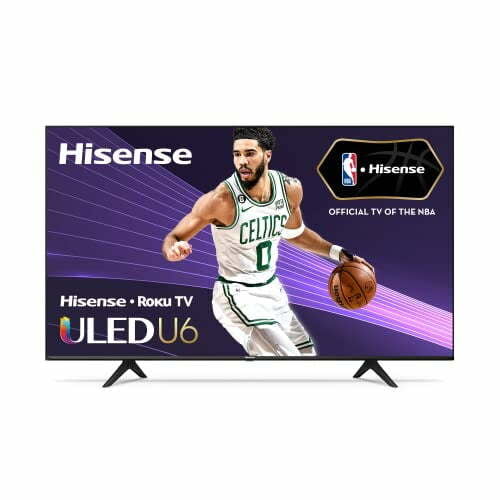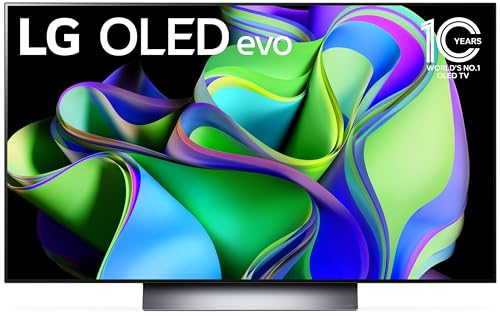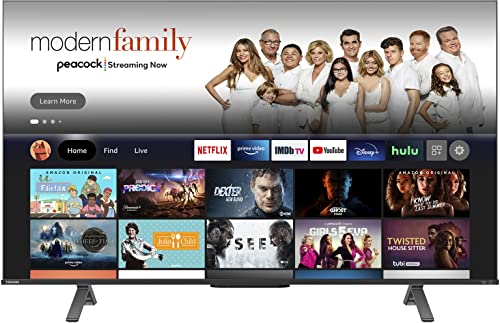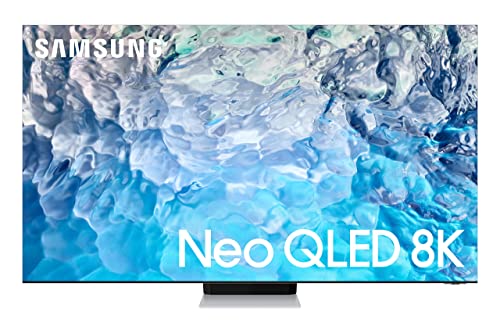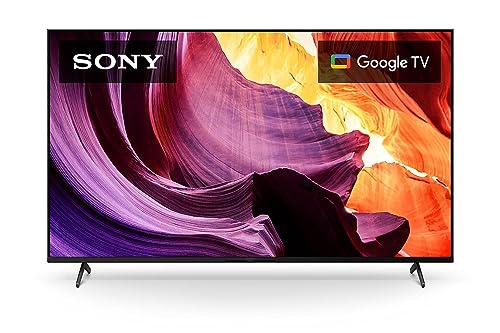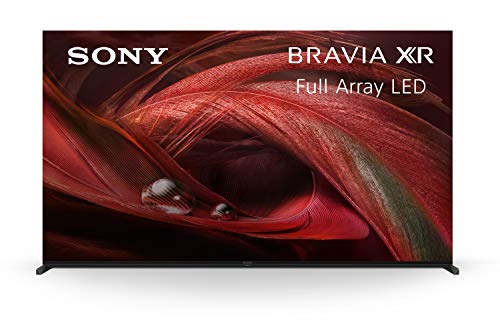Finding the best TV for your money in 2023 can be a little misleading. With so many products on the market today, with all different features and resolutions, “best” can be an incredibly subjective term. So, we sifted through hundreds of TVs online, ranging from smart TVs to OLED TVs to 4K TVs in search of the best of the best.
Product
|
True Score
|
Price | |||
|---|---|---|---|---|---|
| 1 |
| 93 | $2,279.00 $3,000 SAVE $721 | ||
| 2 | 92 | $849.99 | |||
| 3 | 92 | $298.00 $397 SAVE $99 | |||
| 4 |
| 91 | $1,796.99 $2,500 SAVE $703 | ||
| 5 |
| 91 | $1,799.00 $2,998 SAVE $1,199 | ||
| 6 | 91 | $1,296.99 $1,500 SAVE $203 | |||
| 7 |
| 91 | $1,399.99 $1,600 SAVE $200 |
Top TVs
- Read Full Review → : Sony A95K OLED TVSony
Sony A95K OLED TV
Best for Home Theater
The Sony A95K OLED TV boasts a fast response time, a high peak brightness, HDMI 2.1 support, and good reflection diffusion, making it a superb choice for AV enthusiasts and console gamers alike. But its lack of FreeSync will keep away more serious gamers.

True Score
939413Experts
1001Customers
 Cosmic WonderSAVE $721$2,999.99$2,279.00
Cosmic WonderSAVE $721$2,999.99$2,279.00Snapshot
Reasons to Buy
- Remarkable picture quality
Impressive for movies and gaming, the TV’s terrific HDR color gamut (100% coverage on DCI P3 xy) exhibits true-to-life imagery and intricate details. Moreover, dark scenes are excellent with rich, deep blacks and perfect black uniformity (native std. Deviation of 0.157%).
- High brightness and contrast
It does a great job at eliminating glare in light-filled rooms with its tested 983 nits peak brightness, performing better than 83% of our tested TVs. Additionally, nighttime viewing is immersive, given its near-infinite contrast ratio (inf:1).
- Low response time and input lag
High-speed games display smooth visuals due to its near-instantaneous 0.2 ms response time. Moreover, casual gamers will find its reasonably responsive 16.9 ms input lag (4K at 60Hz), which ranks in the bottom third of our tested TVs, acceptable.
- Fast refresh rate and VRR support
On-screen content remains remarkably smooth thanks to its 120 Hz refresh rate and screen tearing is out of the picture with VRR compatibility.
- Wide viewing angles
Family movie nights allow for an equally immersive view from most areas of the room as colors wash out only after 70°, which means visuals remain fairly consistent.
Reasons to Avoid
- Relatively low SDR brightness
The 346 nits peak SDR brightness isn’t bright enough for daytime use and is more suited for dim or dark rooms.
Specifications

Backlight Type Self-Emitting Pixels Display Type QD-OLED HDMI Inputs 4 
HDMI Type HDMI 2.1 HDR Format Dolby Vision, HDR10, HLG 
HomeKit Compatible Yes 
LED Panel Type OLED Max Resolution 3840 x 2160 (4k) 
Number of Audio Channels 7.1 
Panel Type QD-OLED Refresh Rate 120 Hz Screen size 55", 65" 
Smart Platform Google TV 
Speaker Output 20W + 20W + 10W + 10W 
Sync Technology No 
VRR Yes All Specs
Test Results
Color Gamut % (DCI P3 xy) 99.2375 Color Gamut % (DCI P3 uv) 100 Color Gamut % (Rec 2020 xy) 86.34 Color Gamut % (Rec 2020 uv) 91.28 Color Gamut % (sRGB) 99.9 Color Gamut % (Rec 709) 110.8 Color Gamut % (BT.2020) 89.35 Color Gamut % (Adobe RGB) 91 Color Gamut % (BT.709) No Data Contrast Ratio (x:1) No Data SDR Brightness (nits) 517 HDR Brightness (nits) 952 Input Lag (ms) 14.4 Response Time (ms) 4.1 Color Washout (Degrees) 70 Color Shift (Degrees) 70 Brightness Loss (Degrees) 70 Reflections (%) 1.1 Low-Freq Extension (Hz) 84.76 Freq Response StdDev @ 70db 3.89 Freq Response StdDev @ 80db 3.06 Weighted Total Harmonic Distortion @80db 0.229 Intermodulation Distortion @80db 1.25 EOTF (600 nit delta) 0.0012 EOTF (1000 nit delta) 0.0012 EOTF (4000 nit delta) 0.0011 All Specs
All Retailers
- $2,279.00$3,000Save $721
- $2,519.99$2,800Save $280
- $2,798.00
Our Verdict
The Sony A95K OLED TV is a fantastic option for AV enthusiasts looking for a good QD-OLED model to display in their living rooms or movie dens, as it features an excellent peak brightness tested at around 983 nits.
It also boasts four HDMI ports and two of them have the recent HDMI 2.1 standard for console users. And it sports excellent deep black levels with an infinite tested contrast ratio, thanks to its Quantum Dot OLED tech, which helps HDR content look amazing.
Moreover, it comes with an excellent matte display which works well against reflections.
It also features a near-instantaneous response time which was measured at 0.2 ms. But it does not have NVIDIA G Sync or AMD Free Sync for hardcore gamers, despite having VRR.
- Read Full Review → : LG C2 OLED TVLG
LG C2 OLED TV
Overall, the LG C2 OLED TV is a good mid-range TV. While there are some uniformity and software concerns, it’s a top-notch choice if you desire outstanding visuals and immersive gaming, though other brands now offer OLED alternatives with more features.

True Score
929412Experts
9316kCustomers
 Cosmic Wonder$849.99
Cosmic Wonder$849.99Snapshot
Reasons to Buy
- Excellent picture quality
The self-admissive OLED tech provides high-quality visuals and is most beneficial for gaming, but it’s also great for sports HDR content. It also offers a wide 99.36% color gamut, providing rich, vibrant displays.
- Infinite contrast ratio
Delivers deep, true black levels, specifically when viewing HDR content in dark rooms. When tested, the contrast ratio of Inf:1, which is right at the top of the OLED category.
- Effective motion handling
It has a hyper-fast control input and produces virtually no blurriness or tearing during fast-paced scenes, given its tested 2.4 ms input lag and 0.2 ms response time.
Both metrics rank among the top of the OLED TV category.
- Excellent refresh rates
Fast-paced gaming visuals are smooth, given its 120 Hz refresh rate and VRR.
- Wide viewing angles
Provides excellent visuals, even at off-angle viewing, as it boasts 70-degree viewing angles.
Reasons to Avoid
- Weak peak brightness in certain settings
The TV’s brightness works fine for typical viewing, but during very bright scenes, it can appear dimmed in brighter rooms, given it maxes out at 810 nits, which is slightly below average for the OLED category.
- Unimpressive bass performance
Especially at higher volumes, the TV does not produce proper bass levels to match the higher frequencies
- Remote controls can be oversensitive
- Alexa integration can be unreliable and frustrating
- WebOS interface has ads and clutter
Specifications

Backlight Type Self-Emitting Pixels Display Type OLED HDMI Inputs 4 
HDMI Type HDMI 2.1 HDR Format Dolby Vision, HDR10, HDR10+, HLG 
HomeKit Compatible Yes 
LED Panel Type OLED Max Resolution 3840 x 2160 (4k) 
Number of Audio Channels 2.2 
Panel Type OLED Refresh Rate 120 Hz Screen size 42", 48", 55", 65", 77", 83" 
Smart Platform webOS 
Speaker Output 40 Watts 
Sync Technology AMD FreeSync, G-Sync 
VRR Yes All Specs
Test Results
Color Gamut % (DCI P3 xy) 98.326 Color Gamut % (DCI P3 uv) 99.36 Color Gamut % (Rec 2020 xy) 71.875 Color Gamut % (Rec 2020 uv) 76.26 Color Gamut % (sRGB) 100 Color Gamut % (Rec 709) 134.45 Color Gamut % (BT.2020) No Data Color Gamut % (Adobe RGB) 88.8 Color Gamut % (BT.709) No Data Contrast Ratio (x:1) No Data SDR Brightness (nits) 344 HDR Brightness (nits) 809 Input Lag (ms) 11.6 Response Time (ms) 2.4 Color Washout (Degrees) 65 Color Shift (Degrees) 27 Brightness Loss (Degrees) 70 Reflections (%) 1.5 Low-Freq Extension (Hz) 80 Freq Response StdDev @ 70db 2.29 Freq Response StdDev @ 80db 2.87 Weighted Total Harmonic Distortion @80db 0.083 Intermodulation Distortion @80db 0.86 EOTF (600 nit delta) 0.0038 EOTF (1000 nit delta) 0.0044 EOTF (4000 nit delta) 0.0064 All Specs
All Retailers
- $849.99
Our Verdict
LG C2 OLED TV provides a nearly infinite contrast ratio of 1, perfect blacks, and no blooming or haloing, making it ideal for dark room viewing. And with an 820 cd/m² white luminance, it has impressive brightness and reflection handling to suit bright rooms and wide seating arrangements.
Gamers will appreciate the low input lag, a tested blazing 2.4 ms 100% response time, four HDMI 2.1 inputs, and 120Hz gaming capabilities, enhancing the gaming experience.
However, it has flaws. Some users may find the aggressive automatic brightness limiting feature distracting, experience uniformity issues at angles, and face a slight learning curve with the menu settings. The TV’s lack of support for certain high-resolution audio formats could be disappointing for audiophiles.
Category Snapshot
TVs
- Total Brands/Products Tested
17 Brands, 156 Products
- Top 2 Brands
LG, Hisense
- Price Range (Budget-Premium)
$400-$2000
- Average True Score
76.65
- Important Test Criteria
Brightness (cd/m2)
Contrast Ratio (1000:1) - Most Trusted Testers

- Top TV Experts
- Recommended Retailer

- Typical Warranty
1 year
- Covered by Insurance
Yes – AKKO
- Test Methodology
- Read Full Review → : LG G2 OLED TVLG
LG G2 OLED TV
Considering its fast response time, wide viewing angles, and excellent brightness and black levels, the LG G2 OLED TV is worth the premium price for movies and gaming. However, mediocre upscaling performance, aggressive ABL, and purple tints from bright reflections can be a nuisance.

True Score
929612Experts
893kCustomers
 Cosmic WonderSAVE $99$396.95$298.00
Cosmic WonderSAVE $99$396.95$298.00Snapshot
Reasons to Buy
- Outstanding picture quality
It is ideal for movie watching and gaming in dark settings due to its best-in-class and movie-night-worthy black levels. Additionally, its wide color gamut (with 98.58% coverage on the DCI P3 xy color space) ensures lifelike images and subtle shades, although some colors may appear slightly muted.
- Good brightness and outstanding contrast ratio
Daytime movie viewing is satisfactory with its moderate peak brightness of 590.54 nits, which is higher than 45% of our tested TVs. The TV achieves precise distinction between black and white tones due to its inf:1 contrast ratio (which is among the best tested), resulting in vibrant and detailed picture quality.
- Fast refresh rate and VRR support
You can experience ultra-smooth visuals during the most action-packed moments, courtesy of the impressive 120 Hz refresh rate. Plus, you won’t have to deal with unsightly screen tearing since it is compatible with VRR.
- Quick response time and low input lag
For avid gamers in pursuit of a sharper, more immersive experience, the 2.3 ms response time and tested low input lag (5.3 ms at 1080p) are particularly enticing. Moreover, the input lag is among the best out of all our certified tested TVs.
- Wide viewing angles
Family movie nights will be great due to its excellent off-center viewing, with colors washing out at 68°.
Reasons to Avoid
- Extra strong ABL
Noticeable brightness fluctuations caused by the automatic brightness limiter (ABL) in well-lit rooms can be off-putting while watching your favorite content.
- Visible purple hue
Even with the TV’s anti-reflective coating, strong light sources appear as purple tints, affecting color accuracy.
- Dissatisfactory upscaling performance
Screening older videos may not offer the visual appeal you seek since the TV‘s processor falls short in converting old 480p content into vivid 4K.
Specifications

Backlight Type Full-Array Display Type OLED HDMI Inputs 4 
HDMI Type HDMI 2.1 HDR Format Dolby Vision, HDR10, HLG 
HomeKit Compatible Yes 
LED Panel Type OLED Max Resolution 3840 x 2160 (4k) 
Number of Audio Channels 4.2 
Panel Type OLED Refresh Rate 120 Hz Screen size 55", 65", 77", 83" 
Smart Platform webOS 
Speaker Output 60 watts 
Sync Technology AMD FreeSync, G-Sync 
VRR Yes All Specs
Test Results
Color Gamut % (DCI P3 xy) 99.24 Color Gamut % (DCI P3 uv) 99.5 Color Gamut % (Rec 2020 xy) 72.98 Color Gamut % (Rec 2020 uv) 78.2 Color Gamut % (sRGB) No Data Color Gamut % (Rec 709) 131.75 Color Gamut % (BT.2020) No Data Color Gamut % (Adobe RGB) No Data Color Gamut % (BT.709) No Data Contrast Ratio (x:1) No Data SDR Brightness (nits) 606 HDR Brightness (nits) 926 Input Lag (ms) 11.6 Response Time (ms) 2.3 Color Washout (Degrees) 68 Color Shift (Degrees) 25 Brightness Loss (Degrees) 68 Reflections (%) 1.4 Low-Freq Extension (Hz) 75.51 Freq Response StdDev @ 70db 4.65 Freq Response StdDev @ 80db 4.37 Weighted Total Harmonic Distortion @80db 0.648 Intermodulation Distortion @80db 1.06 EOTF (600 nit delta) 0.0086 EOTF (1000 nit delta) 0.004 EOTF (4000 nit delta) 0.0038 All Specs
All Retailers
- $298.00$397Save $99
- $351.99$370Save $18
- $1,696.99
Our Verdict
Although the LG G2 OLED TV’s ABL causes brightness fluctuations, its peak brightness (590.54 nits) is excellent for lit rooms.
All four HDMI ports support HDMI 2.1, which is perfect for connecting consoles, and the TV has movie-night-worthy black levels. However, despite the anti-reflective coating, bright lights appear as slightly purple tints.
The tested 2.3 ms response time and 120 Hz refresh rate breathe life into fast-paced gaming, while VRR prevents screen tearing. With an inf:1 contrast ratio, colors pop, but the processor is mediocre at upscaling 480p content.
The remote’s hassle-free point-and-play function and voice command help navigate the user-friendly WebOS software, viewing angles are ultra-wide (color washout at 68°), and the low input lag (5.3 ms at 1080p) ensures responsive gaming.
- Read Full Review → : LG G3 OLED TVLG
LG G3 OLED TV
Best for 80-inch
The LG G3 OLED TV delivers stunning picture quality with near-infinite contrast and great brightness for SDR/HDR content. Despite minor flaws, the TV is a top-tier choice, offering a dazzling experience for those willing to invest in the premium option.

True Score
919415Experts
924kCustomers
 Absolutely FreshSAVE $703$2,499.99$1,796.99
Absolutely FreshSAVE $703$2,499.99$1,796.99Snapshot
Reasons to Buy
- Excellent picture quality
The display delivers strong performance for HDR content, sports, gaming, and casual viewing. It’s fast and detailed, and its tested 99.13% DCI color gamut provides accurate, vibrant colors and is one of the best in the OLED category.
- Near-infinite contrast ratio resulting in perfect blacks
Black levels are perfect, meaning viewers experience heightened visuals, especially when watching HDR content in dark rooms, as it has an Inf : 1 contrast ratio.
- Extremely bright for an OLED
Visuals stay accurate and clear, even in brightly lit rooms, and tests confirm the TV has a 1449 nit peak brightness, making it one of the best in the OLED category.
- Fast motion handling
Gamers will enjoy rapid command inputs, as the TV has a stellar 9.2 ms input lag. Additionally, the pixels change without noticeable blurring or delay when viewing fast-moving objects, and its response time is at .2 ms. In both respects, the G3 ranks at the top of the OLED category.
- Exceptionally wide viewing angle
Off-angle viewing experiences no color washouts or inconsistency, given the TVs near perfect 70-degree viewing angles.
Reasons to Avoid
- Aggressive automatic brightness limiter
Overactive ABL can cause clarity issues when viewing in bright rooms.
- Subpar sound quality
Speakers struggle to produce accurate bass at high volumes, and sound slightly distorts when emitting single frequencies.
Specifications

Backlight Type n/a Display Type OLED HDMI Inputs 4 
HDMI Type HDMI 2.1 HDR Format Dolby Vision, HDR10, HLG 
HomeKit Compatible Yes Max Resolution 3840 x 2160 (4k) 
Number of Audio Channels 4.2 
Panel Type OLED Refresh Rate 120 Hz Screen size 55", 65", 77", 83" 
Smart Platform webOS 
Speaker Output 60 watts 
Sync Technology G-Sync 
VRR Yes All Specs
Test Results
Color Gamut % (DCI P3 xy) 97.54571429 Color Gamut % (DCI P3 uv) 99.13 Color Gamut % (Rec 2020 xy) 73.65 Color Gamut % (Rec 2020 uv) 75.48 Color Gamut % (sRGB) 100 Color Gamut % (Rec 709) 99.7631 Color Gamut % (BT.2020) 74.4 Color Gamut % (Adobe RGB) 94 Color Gamut % (BT.709) No Data Contrast Ratio (x:1) No Data SDR Brightness (nits) 503 HDR Brightness (nits) 1385 Input Lag (ms) 11.8 Response Time (ms) 2.6 Color Washout (Degrees) 70 Color Shift (Degrees) 70 Brightness Loss (Degrees) 70 Reflections (%) 0.9 Low-Freq Extension (Hz) 89.8 Freq Response StdDev @ 70db 2.01 Freq Response StdDev @ 80db 2 Weighted Total Harmonic Distortion @80db 0.143 Intermodulation Distortion @80db 1.4 EOTF (600 nit delta) 0.0027 EOTF (1000 nit delta) 0.0039 EOTF (4000 nit delta) 0.0036 All Specs
All Retailers
- $1,796.99$2,500Save $703
- $1,796.99$2,497Save $700
- $1,799.99$2,000Save $200
Our Verdict
The LG G3 OLED TV has a near-infinite contrast ratio of Inf :1, delivering deep inky blacks without distracting blooming or haloing around bright objects.
The TV’s high peak brightness of 527 cd/m² and excellent reflection handling ensure optimal performance in any room.
Gamers will be pleased with the low input lag tested at 5.5 ms at its native refresh rate of 120 Hz and superb 100% response time of 2.6 ms, keeping action clear and crisp.
The 4.2 speaker setup with Dolby Atmos spatial sound technology complements the stunning visuals with immersive audio.
The TV also has many inputs, boasting 4 HDMI 2.1 bandwidth ports and 3 USB slots. However, the aggressive ABL is distracting, and the TV lacks HDR10+ support.
- Read Full Review → : Samsung QN95B Neo QLED TVSamsung
Samsung QN95B Neo QLED TV
Best for Bright Room
The Samsung QN95B Neo QLED TV offers high brightness, many inputs, and superb gaming performance, making it an excellent choice for those seeking a versatile, full-featured 4K smart TV.

True Score
91988Experts
79178Customers
 Cosmic WonderSAVE $1,199$2,997.99$1,799.00
Cosmic WonderSAVE $1,199$2,997.99$1,799.00Snapshot
Reasons to Buy
- Outstanding brightness in HDR mode
With a tested brightness of 2268 cd/m2, this TV is near the top of all 4K TVs in its category. High brightness means it produces a clear, vibrant and dynamic picture even in well-lit rooms.
- Effective local dimming with great contrast and deep blacks
Its 110,000:1 effective contrast ratio in HDR mode is higher than nearly all other QLED backlit models, meaning black areas will be truly black and not washed-out in high-contrast scenes.
- Better motion handling than most competitors, great for PC gaming
The QN95B Neo’s 144-Hz refresh rate matches or exceeds 90% of the TVs in its class. Input lag is under 10 ms in RTINGS testing, also putting it in the top third of all TVs in its category.
- It also offers chroma 4:4:4 support so it works well as a PC monitor.
This allows clear, stable text display. The 144 Hz refresh rate also works well with PC graphics card outputs.
Reasons to Avoid
- Sub-par Picture quality
While the mini LED tech here works well, it can’t match the near-infinite contrast that OLED models offer. It is missing some shadow detail compared to top OLED competitors
- Somehwat convoluted user interface
Samsung’s UI is functional but more complex to use than some competing systems.
- Default mode appears oversaturated to some users
While it displays a wide color gamut, it tends to oversaturate warm colors, making a picture that can appear artificially vivid.
Specifications

Backlight Type Full-Array Display Type QLED HDMI Inputs 4 
HDMI Type HDMI 2.1 HDR Format HDR10+ 
HomeKit Compatible No Max Resolution 3840 x 2160 (4k) 
Number of Audio Channels 4.2.2 
Panel Type QD-OLED Refresh Rate 120 Hz, 144 Hz Screen size 55", 65", 75", 85" 
Smart Platform Tizen 
Speaker Output 70 Watts 
Sync Technology AMD FreeSync Premium Pro 
VRR Yes 
Works With Remote Control, SmartThings, Wi-Fi All Specs
Test Results
Color Gamut % (DCI P3 xy) 94.70333333 Color Gamut % (DCI P3 uv) 94.75 Color Gamut % (Rec 2020 xy) 67.27 Color Gamut % (Rec 2020 uv) 77.38 Color Gamut % (sRGB) No Data Color Gamut % (Rec 709) 99.97 Color Gamut % (BT.2020) 75 Color Gamut % (Adobe RGB) No Data Color Gamut % (BT.709) No Data Contrast Ratio (x:1) 110423 SDR Brightness (nits) 1934 HDR Brightness (nits) 2318 Input Lag (ms) 10.0 Response Time (ms) 7.3 Color Washout (Degrees) 38 Color Shift (Degrees) 40 Brightness Loss (Degrees) 45 Reflections (%) 2.4 Low-Freq Extension (Hz) 106.79 Freq Response StdDev @ 70db 2.78 Freq Response StdDev @ 80db 2.55 Weighted Total Harmonic Distortion @80db 0.239 Intermodulation Distortion @80db 0.29 EOTF (600 nit delta) 0.0438 EOTF (1000 nit delta) 0.0438 EOTF (4000 nit delta) 0.0392 All Specs
All Retailers
- $1,799.00$2,998Save $1,199
- $3,297.99
Our Verdict
The QN95B offers great HDR-friendly brightness, tested to reach almost 3000 cd/m2 in Dynamic preset mode, and produces vivid HDR scenes. It has great reflection handling and deep blacks, with local dimming boosting contrast up to 110,423:1.
A sub-10-ms input lag and 144Hz refresh rate help gaming performance. Input options include 4 HDMI 2.1 ports housed in an external One Connect box.
The mini-LED technology and effective image processor deliver an excellent color gamut. The QN95B is an effective PC monitor with chroma 4:4:4 support for clear text.
Occasional blooming and a somewhat convoluted interface are downsides. Competing OLED TVs deliver deeper blacks and more detail in dark scenes. However, considering its overall performance, the QN95B remains a top choice among 4K TVs.
- Read Full Review → : LG CX
LG CX
The LG CX OLED TV shatters assumptions that you need to be directly in front of it for the best picture. It’s unfortunate, then, that the TV is missing HDR10+ support. Still, it can handle anything from gaming to a candle-lit movie night.

True Score
91913Experts
968kCustomers
SAVE $203$1,499.99$1,296.99Snapshot
Reasons to Buy
- Fantastic Picture Quality
- Amazing Sound
- Fantastic Viewing Angles
- Superb Contrast Ratio
- 120Hz Refresh Rate
Reasons to Avoid
- Brightness Could Be Better
- Risk of Burn-In
- Missing HDR10+
Specifications

Backlight Type No Display Type OLED HDMI Inputs 4 
HDMI Type HDMI 2.1 HDR Format Dolby Vision, HDR10, HLG Max Resolution 3840 x 2160 (4k) 
Number of Audio Channels 2.2 
Panel Type OLED Refresh Rate 120 Hz Screen size 48" 
Smart Platform webOS 
Speaker Output 40 Watts 
Sync Technology G-Sync 
VRR Yes All Specs
All Retailers
- $1,296.99$1,500Save $203
Our Verdict
The LG CX OLED can handle whatever you throw at it, whether that’s gaming or a candle-lit movie night.
And while wide-viewing angles are usually a bane for most TVs, this one shatters all pre-determined assumptions that you need to be directly in front of it for the best picture.
Further, the TV also sports fantastic sound. It’s unfortunate, then, that the TV is missing HDR10+ support.
- Read Full Review → : Samsung S90C TVSamsung
Samsung S90C TV
Best for 4K
While the Samsung S90C lacks support for DTS audio formats, the picture quality and response time are great for games, sports, and movies. Considering the lower cost, the S90C is a compelling OLED budget option for those seeking an excellent TV upgrade.

True Score
91958Experts
893kCustomers
 Absolutely FreshSAVE $200$1,599.99$1,399.99
Absolutely FreshSAVE $200$1,599.99$1,399.99Snapshot
Reasons to Buy
- Excellent picture quality
The TV excels for sports, gaming, and HDR content, as it provides stunning details, deeper blacks, and outstanding motion processing.
The 99.95% DCI color gamut is super wide, delivering vibrant colors, which places it at the top of the OLED category.
- The near-infinite contrast ratio for perfect blacks
Provides ultra-detailed, near-perfect black levels when viewing content in dark rooms, given its Inf :1 contrast ratio.
- High peak brightness
With a peak brightness tested at 2,000 nits, the TV is suitable for watching in bright rooms without sacrificing visual detail.
The brightness sits near the top of the OLED category.
- Exceptionally wide viewing angle
Even at off-viewing angles, the TV displays accurate visuals, as it boasts a wide, 70-degree viewing angle.
- Low input lag/Response time
Gamers can expect fast input commands with the 8.52 ms tested input lag, which is especially useful during fast-paced gameplay.
The pixel response time, tested at .2 ms, makes it one of the fastest in the OLED category meaning there’s virtually no blurring during rapid frame changes.
- Sharp upscaling
Reasons to Avoid
- Aggressive Auto Brightness Limiter (ABL)
Overactive ABL is distracting when watching content in bright rooms and even lowers the overall visual quality
- No support for DTS or Dolby Vision
Specifications

Backlight Type n/a Display Type OLED HDMI Inputs 4 
HDMI Type HDMI 2.1 HDR Format HDR10+, HLG 
HomeKit Compatible No Max Resolution 3840 x 2160 (4k) 
Number of Audio Channels 2.1 
Panel Type OLED Refresh Rate 120 Hz, 144 Hz Screen size 55", 65", 75", 83" 
Smart Platform Tizen 
Speaker Output 40 Watts 
Sync Technology AMD FreeSync Premium 
VRR Yes All Specs
Test Results
Color Gamut % (DCI P3 xy) 99.975 Color Gamut % (DCI P3 uv) 99.95 Color Gamut % (Rec 2020 xy) 86.37 Color Gamut % (Rec 2020 uv) 91.59 Color Gamut % (sRGB) No Data Color Gamut % (Rec 709) No Data Color Gamut % (BT.2020) 76 Color Gamut % (Adobe RGB) No Data Color Gamut % (BT.709) No Data Contrast Ratio (x:1) No Data SDR Brightness (nits) 373 HDR Brightness (nits) 1058 Input Lag (ms) 8.5 Response Time (ms) 1.4 Color Washout (Degrees) 70 Color Shift (Degrees) 70 Brightness Loss (Degrees) 70 Reflections (%) 1.2 Low-Freq Extension (Hz) 84.76 Freq Response StdDev @ 70db 2.8 Freq Response StdDev @ 80db 3.63 Weighted Total Harmonic Distortion @80db 0.133 Intermodulation Distortion @80db 2.47 EOTF (600 nit delta) 0.0031 EOTF (1000 nit delta) 0.0036 EOTF (4000 nit delta) 0.0024 All Specs
All Retailers
- $1,399.99$1,600Save $200
- $1,497.95$1,898Save $400
- $1,599.00
Our Verdict
The Samsung S90C TV’s OLED offers a great viewing experience, providing excellent black levels, a wide color gamut, and eliminating blooming, making it great for casual viewing, gaming, HDR, and sports. The panel provides a near-infinite contrast ratio of Inf :1, delivering perfect blacks and bright highlights without blooming. The color gamut sits at 100%, meaning it provides accurate, detailed colors, which are enhanced by the QD OLED tech.
Additionally, the TV offers exceptional reflection, but its peak brightness at 381 cd/m² is mediocre. It has wide 70-degree viewing angles and a superb 100% response time of 1.2 ms, ensuring clear and sharp motion. Then lastly, it has four HDMI 2.1 ports and two slots for USB cables.
The software, the TizenOS smart interface, also has a great selection of apps, games, and features. However, the aggressive automatic brightness limiter is distracting in rooms with lots of ambient light. Also, it has a tested low input lag and response time of 5.5 ms at 120 Hz, which sits at the higher end of the category.
Beginner’s Guide To Televisions
Consumers who are considering new TVs often have a lot of factors to consider. However, most of us don’t even understand the technology behind televisions. In order to understand many of the new features of TVs, it is important to understand how each feature impacts the TV. For example, certain production methods, like those for OLED and LCD TVs, can have a direct impact on the TV and its quality. Plasma was once a huge factor with a big price tag, but plasma TVs are old now, and the new hotness belongs to OLED and QLED units. Meanwhile, other features, like the audio return channel, enhance the TV.
What Is A TV And How Does It Work?
A television is an electronic device that interprets signals to create an image on the screen and the audio that goes along with it. TVs allow consumers to watch TV shows and movies created for entertainment. In addition to standard TVs, there are also “smart” TVs, which allow users to stream content from the internet directly to their TV.
What Is TV Resolution?
You probably hear about TV resolution all the time, and most people know it roughly refers to the resolution of the image the TV displays. But, you may be wondering, what exactly is TV resolution? In simple terms, resolution directly refers to the number of vertical pixels on a panel (and technically to the number of horizontal pixels as well.) When you see something like 1080p or “Full HD”, that means the panel has 1080 vertical pixels per horizontal pixel. Since nearly all 1080p televisions have 1920 horizontal pixels, this means your typical FHD TV will have 2,073,600 pixels. As you move up in resolution, you increase the number of pixels going in both directions, and this means the television can accurately reproduce higher quality content with better accuracy, making for more stunning images and video quality.
What Kinds Of TV Displays Are There?
There are only a few types of displays being sold at the moment, including liquid crystal displays (LCD,) light-emitting diodes (LED,) which are actually a form of LCD TV, and organic light-emitting diode (OLED) TVs.
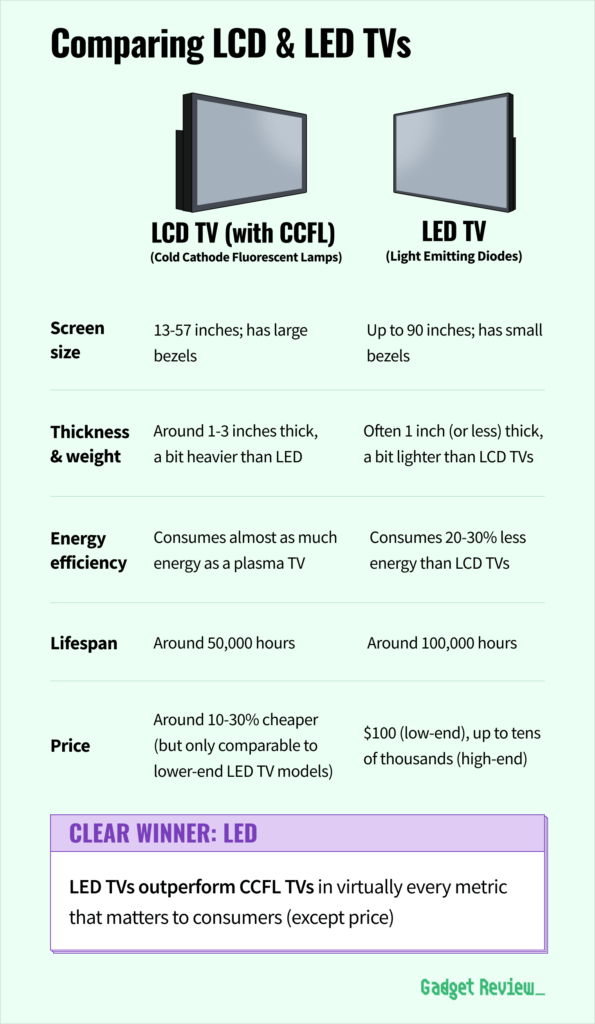
Some people still use cathode-ray tube (CRT) and plasma screen TVs, but they are no longer in production. The most common type of display you’ll encounter will be LCD televisions, so it’s worth knowing exactly what LCD TVs are and how they work. We can help!
What Makes A TV “Smart”?
Smart TVs have become almost ubiquitous in the world of televisions. You may be wondering what being a smart TV means. Simply put, smart televisions still do exactly what “dumb” TVs do, but come with extra features. Like your phone or computer, Smart TVs come with pre-installed apps and have the ability to download new ones. They can connect to the internet, access streaming services and content natively, and do it all over a connection to your home’s internet connection, be it wired or wireless.
Should You Invest In New TV Technology?
If you’re unsure about investing in new TV technology, it’s worth considering what the premium you pay with give you. While newer flat-panel technologies such as 8K resolution and HDR (High Dynamic Range) offer unparalleled fidelity and performance, the content available to the average consumer largely hasn’t caught up with this technology, meaning the high cost of such advanced television lines may not be justifiable until content catches up to the tech and starts to offer you something designed to take advantage of the newest technologies.
insider tip
How Long Should A TV Last? Buying a new TV is a considerable investment, so you’re probably wondering how long your television will last. Luckily manufacturers make TVs to last up to a decade. The average life of a TV lasts around 5 to 7 years, but it can last even longer with proper maintenance and repair. That said, certain conditions like burn-in and screen dimming can occur; those issues should not be a factor until your TV is nearing the end of its life. In addition, certain factors like humidity and lack of ventilation can shorten the life of your TV.
Choosing A Television
Many consumers start looking for a new TV after putting some forethought into what they want. Since we can’t always think of everything, however, here are some things that you should consider. We’ll cover the most important aspect, like budget, size, panel technology and features like smart interface, picture processing tech, and audio performance to help you find that sweet spot.
Step 1. What’s Your Budget For Your TV?
When it comes to buying a new TV, the marketplace has a wide variety options that it can be overwhelming to understand what you’re getting for your money at any given price point. Add into the mix that TVs come in a huge price range and things start to get hazy. Knowing how much you should expect to spend on a TV is a matter of figuring out a budget and deciding what size, display resolution, and features you can and can’t live without, and taking into consideration any peripherals or other components like a sound bar that you’re going to be purchasing as well.
insider tip
Bigger is almost always better when it comes to TVs. If the room you’re putting a TV in has room for a 60” TV but you had a 55” in mind, it’s usually worth it to pay extra for the 60” TV.
Step 2. How Much Room Do You Have?
The size of a TV should depend on the size of the room it is being used in. This idea comes from both the appearance of the TV in the room and the angles that people would be sitting at. The TV should not look massive in a certain room unless that is what you are going for. Additionally, people sitting around the room may want to watch the TV, requiring viewing angle and distance consideration. Generally speaking, your screen size should be as large as you can possibly fit within your budget and the space you have available. Remember that “fit” also includes things like peripherals and cords, so a 65-inch model in a 70 inch nook might be a tight squeeze if you can’t easily set up cables and media decks.
STAT: The average size of LCD TVs in the US has hit 50” as of 2020. It was less than 30” in 1997! (source)
Step 3. What Type Of TV Are You Looking For?
When you are considering different TVs, you should consider whether you want a higher resolution, sharper colors, darker black levels, or greater resilience. Certain types of TVs provide each of these features, though it may be difficult to find all four in one TV. However, many high-end TVs may be designed that have higher resolution, sharper colors, and deep blacks. A common comparison you might make are between LED and LCD TVs. Some TVs also come with curved panels instead of traditional flat panels, which is supposed to improve viewing angles and immersion in the content on the screen.
Did you know?
CRTs are often held up as the gold standard for display tech when playing retro games. If you’re interested in retro gaming, there are plenty of old picture tubes you can find on places like eBay – and you may want to consider making a purchase sooner rather than later.
Step 4. Are You Looking For A 4K TV?
4K TVs provide better image resolution than standard 1080p or high-definition TVs. These TVs typically have around 4,000 pixels along the horizontal axis, which leads to a greater pixel density and more details and offer about 8.6 million pixels in total. It’s worth noting, however, that as size of the TV increases, the pixel density decreases, meaning less pixels in each spot. Keep that in mind when choosing a 4K TV.
Step 5. Do You Want A Smart TV?
Smart TVs allow users to connect to their streaming services through the TV itself and can help make for a smoother viewing experience. If you buy a standard TV, you will need at least one additional device to connect to these applications, like a gaming console. Fortunately, Smart TVs have become more common than “dumb” TVs, and you usually have to go out of your way to find a TV that doesn’t have smart features baked into it. This means choosing a smart TV is less expensive than you might think, because they’re the default type of television on the market now. Common smart TV features include things like pre-installed streaming apps, the ability to connect to Bluetooth and wireless internet, and custom smart platform operating systems, which all serve to round out the smart TV experience.
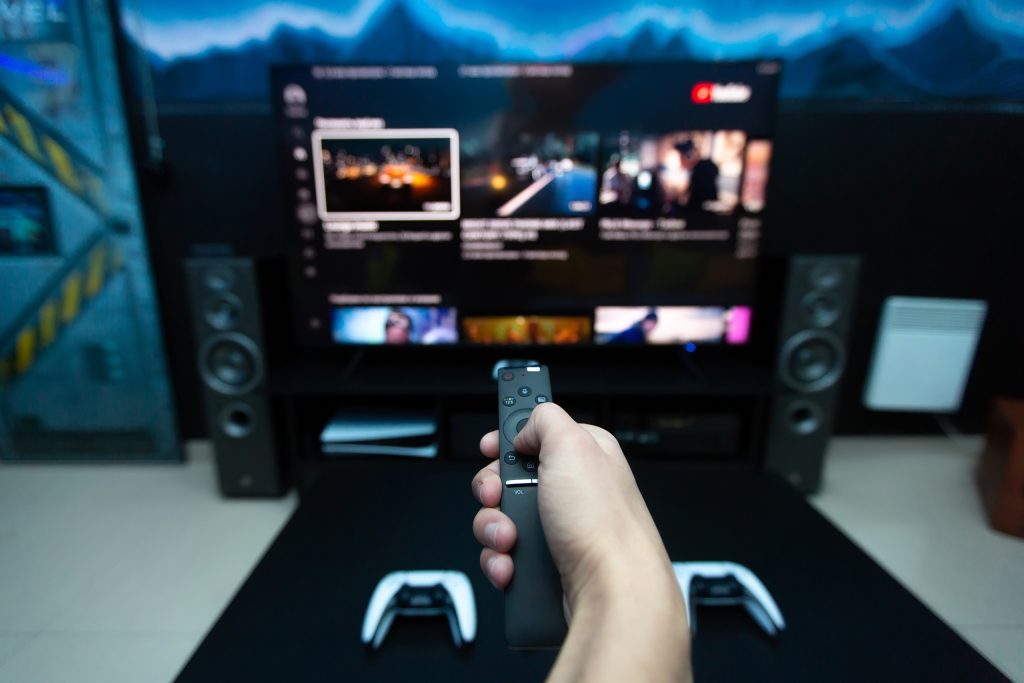
Step 6. What Features Do You Want?
Available features may make or break a TV choice. One common feature that gets compared in televisions is the type of panel the TV uses. VA (vertical alignment) and IPS (in-plane switching) are the two display techs you’ll see compared most often. When comparing a VA panel against an IPS panel, the winner in most rounds is the VA display, which offers truer blacks and wide viewing angles, making it excellent for maintaining excellent picture quality even in dim rooms. IPS panels, on the other hand, offer improved native refresh rate or even variable refresh rate, vibrant colors and a lower price. Other features worth considering include the overall sound quality of the built-in speakers or a super slim design.
Step 7. Should You Consider Other Displays?
Certain types of displays work better for different situations. Gaming and sports, for example, may show up better on a TV with quicker processing. If you want to game, you should look for a gaming TV with low input lag, high resolution, and high refresh rates. High refresh rates help to reduce the input lag because the image updates more frequently. Monitors and televisions may look extremely similar, but there are a number of differences when it comes to image quality, refresh rate and size. Monitors, for example, typically have lower screen resolution, and the image quality will be lower than a TV of the same size. They also have higher refresh rates and require less time to process an image than a television. On the other hand, TVs typically come in larger sizes than monitors.
Did you know?
There are dedicated outdoor TV sets, made by dedicated outdoor TV manufacturers!
Step 8. Are You Aware Of Common Misconceptions?
There is often a lot of confusion surrounding certain TV terms, such as 4K, OLED, and LED. For example, some consumers believe LED and LCD TVs to be different things, when LED refers to the backlight display being an array of LEDs used in an LCD panel. It becomes important to understand each of these terms when you are considering buying a new TV. Terms like “Neo QLED” and Neo QLED TV directly reference Samsung’s take on LED displays, and are an iteration on Samsung’s previous technology, QLED TV. The “Q” stands for quantum and otherwise simply refers to an LED television with proprietary tech.
insider tip
Should You Buy A Used Or Refurbished TV? Buying a used or refurbished TV is an excellent idea if you want to save some money. That said, buy from an authorized dealer that offers a warranty. If possible, buy refurbished from the original manufacturer so that you have a better guarantee. If you want the most protection possible, you should buy a new TV.
Types of Televisions
There are many different types of televisions. However, certain types are no longer on the market, such as plasma or cathode-ray tube TVs. The main type of TV currently on the market is liquid crystal display (LCD) TVs, which require backlighting. Light-emitting diodes (LEDs) often provide the lighting for LCD TVs.
Quantum dot light-emitting diodes (QLEDs) add an extra layer to the screen of an LED with the goal of better image quality. Organic light-emitting diode (OLED) TVs do not use LCDs, making them one of the few TVs available that does not use LCDs.
TVs By Size
TVs By Type
TVs By Resolution
TVs By Use Case
- TVs For Bright Rooms
- Gaming TVs
- Smart TVs For Streaming
- TVs For Sports
Top Television Brands
- LG Televisions
- Sony Televisions
- TCL Televisions
- Vizio Televisions
- Samsung Televisions
- Hisense Televisions
Owning A Television
Owning a TV often comes with its own set of responsibilities. From maintenance and repair to disposal of previous TVs, consumers have a lot to consider. This section covers everything you need to know to care for your purchase!
insider tip
Are Extended Warranties Worth It For TVs? If you buy a TV from a major vendor, whether on line or in a brick-and-mortar store, you’ll more than likely be offered an “extended warranty” at an additional cost. Sometimes these warranties are fairly negligible in cost and some come with a bigger price tag, so you may be wondering whether they’re worth the extra expense. The answer to that depends on a few factors- cost of the TV, what’s covered, and the vendor itself. Before making the decision, know what you’re paying for.
Cleaning Your TV’s Screen
Cleaning your TV screen is very easy. You’ll need a microfiber or a dry soft piece of cloth, dish soap, bowl, spray bottle, and a bowl. First, turn off your TV before you attempt cleaning. It’s much easier to spot dirt and dust when the TV screen is off and cooled down. Next, with a lint-free dry cloth, begin to gently wipe the screen in a circular motion. If you have tough stains, use a wet cloth. Add a drop of dishwashing soap on one-fourth of the water and mix. Apply it onto a soft cloth. Lastly, re-wipe it with a dry microfiber cloth.
Casting To Your TV
Most smart TVs now support a useful little feature known as casting. You may have been wondering what that means, and how you cast to your TV. Fortunately, casting is usually as simple as using Bluetooth on your phone, your home’s wireless connection, or plugging a dongle into the television. Casting using Bluetooth or WiFi simply requires you to turn on your own phone’s Bluetooth or connect to your home’s wireless internet. Then load an app that supports casting to televisions, like YouTube, and tap the “cast to TV” button the app provides. When you cast to your television using a dongle, you simply plug the dongle into your TV (usually into an HDMI port or a USB port) and then connect to the device over Bluetooth or WiFi, and then use the app dedicated to connect to and control the dongle.
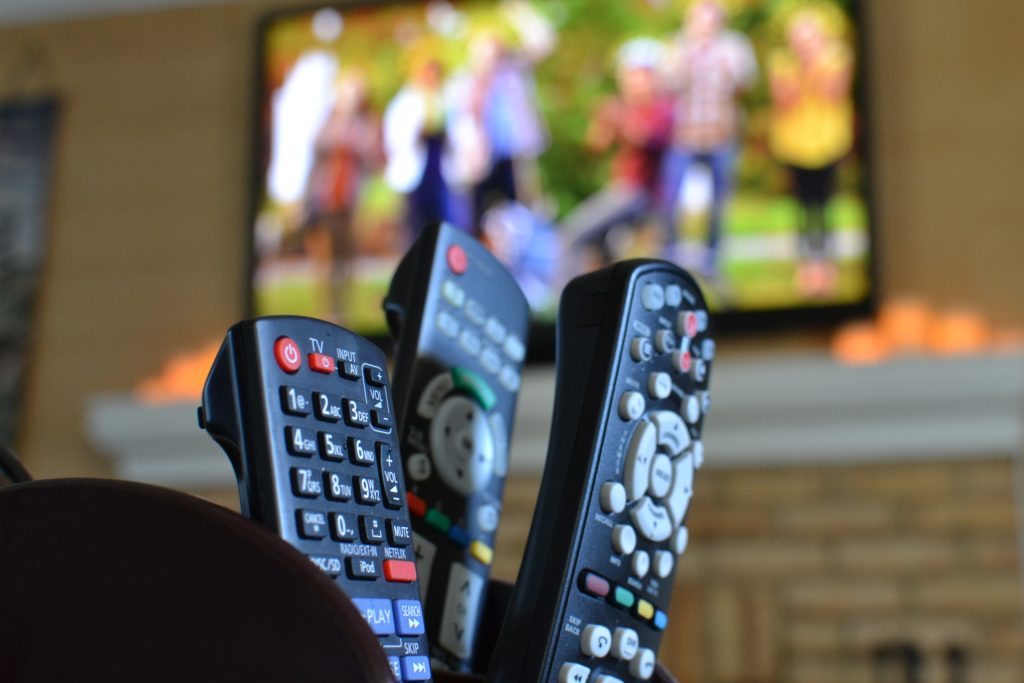
Connecting Television Accessories And External Sources
Certain appliances are made to be used with TVs. However, some may find it difficult to connect to these devices. Fortunately, we can help. Connecting your phone to your television is actually pretty straightforward these days thanks to apps and native support for casting from you phone to TV. You simply need to have Bluetooth on or have both your TV and your phone connected to the same network. Connecting a laptop to a TV is a little more involved, since you might need to use a cable, but most computers come with native applications to help facilitate the entire process.
Television Maintenance And Repair
In some cases, you can troubleshoot problems with your TV using either the manual that comes with it or any additional resources found online. If you’re not sure whether you can repair it on your own, however, it’s best to just call a repairman. Otherwise, it could end up costing you more in the end. We have some useful tips on how to fix a broken TV screen, but the process is involved, so be aware. OLED burn-in, on the other hand, is more a thing you can use some best practices to avoid.
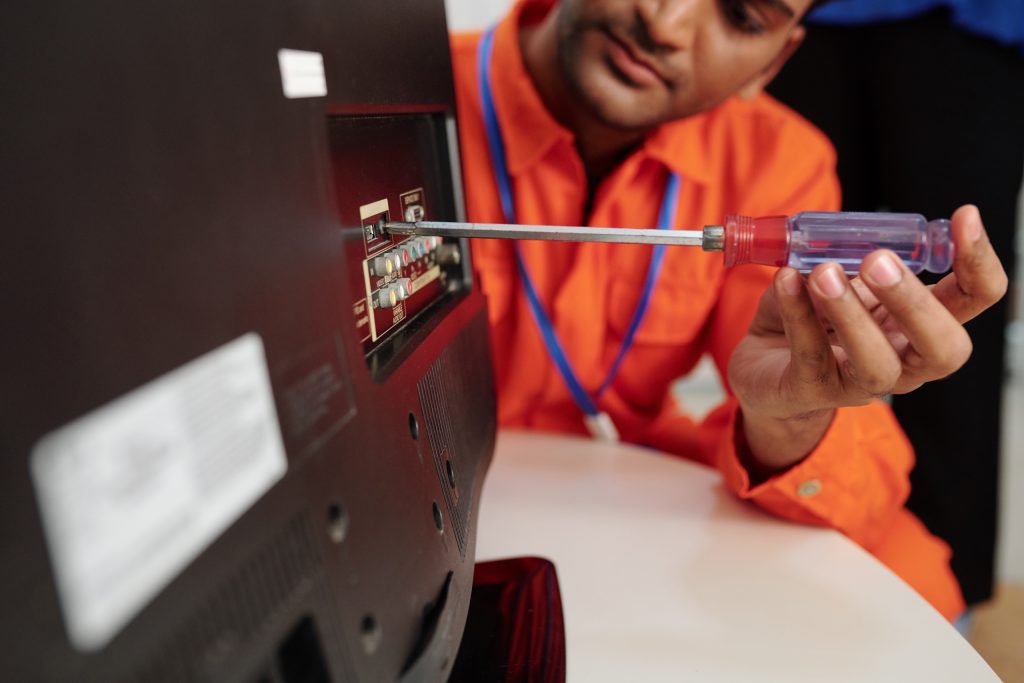
Calibrating Your TV
If you want to know how to calibrate your TV, it’s easy! First, open your TV settings, and hover to the “Custom presets /User Mode” or “Cinema/Movie” preset. Next, disable all image manipulation features such as the Soap Opera effect or Black Frame Insertion. When you are done with TV calibration, you could activate these features to see their effect on the image quality. Adjust the contrast and brightness to get the maximum black while ensuring all the black bars remain visible. If you are looking to have a brighter image, it is best to adjust your TV’s ‘Backlight’ setting.
insider tip
You may notice your TV has “Game Mode” – this feature speeds up the processing of video to reduce input lag and make playing games a much smoother experience. Make sure to turn it off when you’re done gaming though, because it will also cut down your picture quality.






